|
I went to Tai Po Kau on October 12th, arriving at Tai Po Kau Park just before 7.00 a.m. I often visit this park before going to the main forest reserve. It is best early in the morning, particularly when the sun rises above the adjacent hills and begins to illuminate the trees in the park. The park is good for a number of common generalist species – Red-whiskered Bulbul, Japanese White-eye, Common Tailorbird, Cinereous Tit and Oriental Magpie Robin - as well as being a site to pick up a number of the resident forest birds. This morning I was lucky and managed to connect with Scarlet and Grey-chinned Minivets, Orange-bellied Leafbird, Yellow-cheeked Tit, Blue-winged Minla, Velvet-fronted Nuthatch and Fork-tailed Sunbird. The park is the best place in the area to see Great Barbet as sometimes it comes down from the hillsides to feed on fruiting trees. It is not always present, but today I heard its throaty rasping call and managed to get a quick glimpse of it in overhead branches. My first bird of the day, however, was a migrant flycatcher with dark markings across the breast perched on a fence below the western end of the park; unfortunately my views were brief and inadequate so I could not be sure whether it was a Grey-streaked or Dark-sided Flycatcher. I did manage to identify a few other migrants in the park, namely Asian Brown Flycatcher, a couple of Yellow-browed Warblers, Ashy Drongo and Black-winged Cuckooshrike. The latter two species winter here and will be present from now through until next April. Aside from the birds, I came across a Bamboo Pit Viper; it was on the ground under a small shelter next to a dead Brown Forest Skink which I assume it had killed. Unlike most snake species that move away once they are aware of a human presence, the viper remained under the shelter for the following half hour. I kept a little distance as the species is venomous, although there are no known fatalities from its bite in Hong Kong. I spent a couple of hours in the park, although activity became quieter after 8.00 a.m. Then I walked up the access road into the forest. I had heard Mountain Tailorbird singing near the park and there were more singing as I made my way uphill. This species was first recorded in 1999 and has since become widespread with sightings from at least 42 locations in 2013. When you are familiar with its song, you notice how common it is at Tai Po Kau: I heard 19 in total during the morning . Other birds I saw along the road were two Black-throated Laughingthrushes, Rufous-capped Babbler, and a female Fire-breasted Flowerpecker. I took a clockwise route along the red walk and included the blue walk loop. These colour-coded walks are along narrow trails inside the forest. Birding here can be very hit-and-miss. Bird density is generally low and the hope in the enclosed space is to come across a bird wave. There are, however, ground-haunting birds on territory and I heard singing Lesser Shortwing and Pygmy Wren Babbler between the dam and the second picnic area. Like the Mountain Tailorbird, these two species are recent additions to the Hong Kong avifauna. Lesser Shortwing was first recorded in 1998, Pygmy Wren Babbler in 2001. Like the tailorbird, they are now well-established in Hong Kong, particularly in the forests of the New Territories. The red walk proved disappointingly quiet. There was a small bird wave just after the 2nd picnic area but for the most part the birds remained invisible some distance off in the trees. I saw Huet’s Fulvetta and heard minivets, white-eyes, nuthatches and Chestnut Bulbuls. I came across a second wave after I had done the blue walk loop and was near to reconnecting with the red walk. Frustratingly the birds remained high in the trees and seemed to be much the same species as before. A little further along the red walk I chanced upon a loose party of 20 Grey-chinned Minivets feeding in the trees adjacent to the trails; they, at least, gave good views. I also came across two more Lesser Shortwings, loud but invisible in the undergrowth. Apart from these it was hot and quiet and there were no migrants to be seen. Back below the dam, I paused at the stream to admire the striking Common Blue Jewel damselflies on the rocks. I heard and had brief views of a Pale-legged/Sakhalin Leaf Warbler as it flew across the stream into the vegetation. My final new sighting for the day on the way back down the access road was of two Streak-breasted Scimitar Babblers feeding low in vegetation with Rufous-capped Babblers.
0 Comments
Tropical cyclone Pakhar passed close to Hong Kong on August 27th, bringing strong winds and heavy rain in its path. The rain continued for most of the 28th but the 29th was clear and sunny with temperatures back to 32⁰ Celsius. I went out in the late afternoon to spend a couple of hours at Long Valley.
Many of the ponds and fields were wetter than they had been for several months, providing good feeding for a variety of waders, many of which seemed to have been brought in by the storm. Black-winged stilt numbers in particular were much higher than usual for this time of the year; I counted at least 87 but the birds were flighty with a flock of 40 in the air at one time. Other waders included 33 Little Ringed Plovers, at least 17 Pintail/Swinhoe’s Snipe, a Marsh Sandpiper, a Sharp-tailed Sandpiper, four Long-toed Stints and four Red-necked Phalaropes. The latter were swimming and feeding actively on a pond containing green blades of recently planted rice. Migrant passerines consisted of a few Eastern Yellow Wagtails of the nominate race tschutschensis and a Zitting Cisticola. I returned on the following morning to take photographs. Half of the Black-winged Stilts appeared to have moved on overnight and there was only a single phalarope in the same paddyfield. Two Long-toed Stints were still around and I also found a Pacific Golden Plover which had also been present on the previous day but not seen by me. I also saw my first migrant Oriental Reed Warbler of the season. The following images were taken during my afternoon and morning visits. It’s not all doom and gloom. Counts of some water bird species in Deep Bay have actually increased during the new century, including Great Cormorant, Black-tailed Godwit and Eurasian Curlew. The following three species are, however, the most obvious ones to buck the declining trend. Tufted Duck Aythya fuligula 2015: Peak count 3,204 in March and high count3,053 in December. 1995: Peak count 14 on 5 January and 291 on 31 December. Notes: The highest count on record was 6,742 in February 2009. There was a marked increase from 2005 onwards although numbers have slowly fallen since 2010. Most of the Tufted Ducks winter out on the Shenzhen side of Deep Bay. Comment: The marked increase in counts of this species in Hong Kong contradicts the general catch-all explanation that water birds are wintering further to the north because of global warming (although there was a large increase in numbers of Tufted Duck wintering in South Korea in 2015). The fact that the increase in Tufted Duck numbers occurred at much the same time as the demise of Common Shelduck suggest perhaps more local factors are at play. Again, there is speculation that there may have been a change in food supply out in the bay - to the detriment of Common Shelduck but to the benefit of Tufted Duck. Black-faced Spoonbill Platalea minor 2015: High count 372 in the January WC. Increasing numbers at MPNR from mid-October with peak count 421 roosting there on 12 November. 1995: Numbers increased to 99 on 23 November, a new high, constituting approximately 25% of the world population. Notes: Numbers have increased considerably since the 1990s, in line with an overall increase globally. The highest count was 496 on 24 January 2010. Comment: Currently, the global population is 3,941 (January 2017), so Deep Bay now holds about 10% of the world population. This is a great conservation success story and seems mainly due to the protection of the species in its wintering areas, particularly in Taiwan. Pied Avocet Recurvirostra avosetta 2015:Peak count 10,957 in January. 1995:Peak count 1002 in February, a new high count. Notes: There was a substantial increase up until 2008 - the highest count on record was 16,123 in January 2208 - with a gradual fall since then, but numbers still remain high c.f. the 1990s. Comment: A change in the composition of the food supply out on the mud flats may account for the large increase in numbers during this century. The following statement from the Hong Kong Water Quality Resource Centre (see http://wqrc.epd.gov.hk/en/regional-collaboration/deep-bay.aspx ) may be of relevance here (and to the comments on Common Shelduck and Tufted Duck above): In 2000, the two governments formulated the “Deep Bay (Shenzhen Bay) Water Pollution Control Joint Implementation Programme” (JIP) to improve Deep Bay’s water quality. The JIP sets out pollution control measures to be undertaken by both governments at various stages, essentially to reduce wastewater discharge into Deep Bay by extension and improvement of sewerage infrastructure. Both sides would review the JIP regularly so as to evaluate its effectiveness and to draw up necessary additional mitigation measures, including amendment of the JIP. Both sides are working together in accordance with the revised JIP to reduce progressively the pollution load of Deep Bay. The water quality at major rivers discharging into Deep Bay has continued to improve since mid-2000’s. As a result, the water quality of Deep Bay also shows noticeable improvement. Hong Kong and Shenzhen will work together closely to continue to improve the water quality of Deep Bay. REFERENCES
References to authorities cited in my three-part Blog are as follows: BirdLife International 2017. Species factsheet: Mareca falcata. Downloaded from http://www.birdlife.org on 22/06/2017 China Coastal Waterbird Census Group. 2015. Identification of coastal wetlands of international importance for waterbirds: a review of China Coastal Waterbird Surveys 2005–2013. Avian Research 2015 6:12. Hashimoto, H. and Sugawa, H. 2013. Population Trends of Wintering Eurasian Coot Fulica atra in East Asia. Ornithological Science 12(2):91-105. Mundkur, T., Langendoen, T. and Watkins, D. (eds.) 2017. The Asian Waterbird Census 2008-2015 - results of coordinated counts in Asia and Australasia. Wetlands International, Ede. Reeber, S. 2015. Wildfowl of Europe, Asia and North America. Christopher Helm, London. Shi, H. Q., Cao, L., Baxter, M.A. and Liu, N. F. 2008. Status of the East Asian population of the Dalmatian Pelican Pelecanus crispus: the need for urgent conservation action. Bird Conservation International 18:181–193. A number of water birds have declined in numbers in Hong Kong in recent years. The four species discussed below are perhaps the most obvious. Falcated Duck Anas falcata 2015: recorded at MPNR to 13 February with high count two, both females, on 10 January. Recorded at MPNR from 13 December, peak count four, all females, on 26 December. 1995: The highest count in the first-winter period was 101 on 29 January … and 54 on the final day of the year. Notes: The highest count was 413 on 14 January 1984. There has been a big decline since the 1990s. Numbers have only reached double-figures in four of the last fourteen years. Comment: This decline in Hong Kong is reflected more generally in the AWC surveys which show a decline in the counting area from 14,642 in 2008 to 8,133 in 2015, although populations in Japan and Korea seem to be relatively stable . BirdLife International (2017) note a considerable decline in China where hunting is the major cause e.g. an estimated 33,000-37,000 individuals of this species taken along the lower and middle Yangtze River basins in each of the four winters from 1988-1992. Reeber (2015) also notes that decline in China is also due to large scale destruction of its habitats, mainly to make way for agriculture. Falcated Duck is Near threatened. Chinese Spot-billed Duck Anas zonorhyncha 2015: Another poor year for this species, with the lowest peak count since 1974. Recorded at MPNR up to 28 March with a peak count of seven on 25 February. No summer records Recorded at MPNR from 6 October with high count three in the December WC. 1995: High count of 390 in February waterfowl count [Note that this was a mix of both Anas zonorhyncha and Anas haringtoni as they were considered then to be one species, Yellow-nib Duck – although there was only a handful of haringtoni in the total). Up to 15 haringtoni were present in July and August. Notes: As the above indicates, this duck was common in the 1990s and Indian Spot-billed Duck Anas zonorhyncha was regular in small numbers (highest count 40 in October 1997). Both species bred. Now, Chinese Spot-billed Duck is rare in winter and uncommon in summer, and Indian Spot-billed Duck has been recorded in only eight of the last sixteen years and not since 2012. It may well be extinct in the territory. Comment: Possible decline in China related to hunting and habitat destruction, which may have impacted on the Hong Kong population – but this is purely speculative. Eurasian Coot Fulica atra 2015: high count 42 in January, peak count 66 in December, the highest since 2011. 1995: high count 711 in February, peak count 1285 December. Notes: Peak count 3,245 in January 1992, Decline since early 1990s with numbers this century varying from 728 in 2008 to nine in 2012. There have been no counts of 100+ since 2011. Comment: Hashimoto and Sugawa (2013) note a decline in wintering populations in China and a corresponding increase in numbers wintering in Japan and Korea. It seems likely that birds that used to winter in Hong Kong are wintering further to the north or northeast. Spotted Redshank
2015: High count 88 in January WC. Peak count 175 in April. 1995: 1730 in January. Notes: Highest count 2500 April 1987. Continuous declining trend this century to a new low in 2015. No counts of 1,000+ since 2008. Comment: The AWC surveys give a count for China of 655 in 2008 down to 87 in 2005 suggesting a decline on the mainland. (However, winter counts on the mainland are limited in their coverage.) Overall counts in the Asia/Australasia reason remain more or less the same. It remains unclear why numbers have declined in Hong Kong. The (excellent) Hong Kong Bird Report for 2015 has just been published. To while away the wet summer afternoons, I thought it might be of interest to look at the most obvious changes that had taken place in the avifauna at Mai Po/Deep Bay over the past twenty years. I’ve taken an unscientific, snapshot approach, comparing the entries on a handful of species in the 2015 report with the 1995 report. I begin with four species that seem, unfortunately, to have disappeared from Deep Bay for good. Note that “the AWC surveys” in my comments refers to The Asian Waterbird Census 2008-2015 - results of coordinated counts in Asia and Australasia (Mundkur et al., 2017). COMMON SHELDUCK Tadorna tadorna 2015: No records. 1995: Waterfowl counts for Deep Bay in the early part of the year were 980 in January, 1012 in February and 491 in March, though 850 were still present on 28 February. Notes: The highest count was 4,011 on 17 January 1988. There was a massive decline at the turn of the century from 1320 in Jan 2000 to 279 in 2001, then it was more or less downhill all the way to the last record of a single bird in the first-winter period in 2013. Comment: In terms of numbers, this is the most dramatic loss to the Hong Kong avifauna so far this century. The question with this species, as with other species that have become extinct or declined in Hong Kong, is: Are birds simply wintering elsewhere in East Asia or does the HK situation mirror a general decline? In terms of the Common Shelduck, there is no evidence of a decline elsewhere in East Asia. The AWC survey, in fact, shows that numbers have increased in Japan, for example, from 2,070 in 2008 to 6,104 in 2015. It seems likely that the ex-Hong Kong birds are now wintering further to the northeast. This may be a result of climate change, but perhaps there is a more localised reason for the disappearance of the species. One specualtion is that a change in the nature of the food supply in Deep Bay caused by the exponential growth of Shenzhen in recent years has impacted negatively on this species. RED-BREASTED MERGANSER Mergus serrator 2015: No records 1995: All March records: one at Mai Po on 4th, four at Tsim Bei Tsui on 18th, 27 at Mai Po on 19th and 22 off Cape D’Aguilar on 20th. Notes: Although never common, this species used to be a regular winter visitor and passage migrant to Deep Bay with a high count of 97 near Lau Fau Shan in January 1990. There has been a strong decline in numbers since the turn of the century so that now it is a scarce spring passage through southern waters and is no longer annual. There have been no records in Deep Bay since 2012. Comment: The decline in Hong Kong may reflect a general decline in the region. The total number in the AWC surveys (which includes most of Asia and Australasia) show a rise from 6,869 in 2008 to 11,288 in 2012, followed by a decline to 3,235 in 2015. The surveys show a decline in Japan from 6,075 in 2009 to 1,755 in 2015. Numbers in Korea vary annually e.g. from 1,890 in 2008, up to 10,136 in 2012 and down to 1,475 in 2015. The East Asian population is said to be 25,000-100,000 (Reeber 2015); however, the AWC surveys indicate that this assessment may be too high. BLACK-HEADED IBIS Threskiornis melanocephalus 2015: No records 1995: One in Deep Bay 18 March to 25 April, one at Kam Tin on 4 October and one in Deep Bay 14 October to 25 December. Notes: The highest count was 25 in January 1974. There was a significant decline in the last quarter of the 20th century. There have been no records in Hong Kong since 1999. Comment: Present in south and southeast Asia – population 20,000. There used to be a small population in East Asia (c.100 birds in 2002) and breeding was considered – although not proven - to occur in Heilongjiang. Presumably the records in Japan, Hong Kong and elsewhere in eastern and southern China derived from this breeding population. The last record in China was one in Zhejiang province in November 2005. The east Asian population is now believed to be extinct. DALMATIAN PELICAN Pelecanus crispus
2015: No records 1995:Peak count of 19 on 3 February and ten on 25 December. Notes: The Dalmatian Pelican used to be a regular winter visitor to Deep Bay although there was a significant decline after the late 1970s when the flock was of 70-85 birds. Between 18 and 24 birds were present in the 1990s. This further declined to 15 in 2005, after which there were two in 2006, no more than one until 2010 and with no records since. Comment: A small eastern population breeds in Mongolia and winters in southeast China. The size of this population was considered to number c.50 birds in 2007 (Shi et al, 2008) but there was a recent count of 112 at Dongtai, Jiangsu in November 2013 (China Coastal Waterbird Census Group, 2015). The ex-Hong Kong birds are considered to be wintering further to the north. The comment about Common Shelduck above may also be relevant to this species. There are two more species that might be included in this section. One is Indian Spot-billed Duck Anas haringtoni and the other is the critically endangered Baer's Pochard Aythya baeri. Neither of these have been recorded in the territory since 2012. There are a number of egretries scattered throughout the New Territories in Hong Kong. The one I stop at most often is adjacent to the busy Castle Peak Road at Mai Po village. This is, in fact, the largest egretry in the territory. When there, I try to park away from the trees and avoid directly walking under them as the birds’ droppings can be a minor nuisance. However, this doesn't detract from the great interest of the bird activity in the colony. The second largest egretry (in 2016 it contained 151 nests of four heron species) is along the main road on the edge of Tai Po Market. This egretry has been established for many years in spite of its proximity to a busy road and in spite of the number of people who pass by on a regular basis. Apparently, there was a recent complaint made about the droppings from the egrets at Tai Po and the Leisure and Cultural Services Department (LCSD) felt compelled to respond. As I understand it, they sent in a team (along with a crane on the back of a lorry) to cut down the branches overhanging the pavement. In doing so, they also cut down nests with a number of small chicks in them. The chicks fell to the ground and a number of them died. (I have heard of 14 chicks being sent to the rehabilitation unit at KFBG with only 8 of those being alive, but more will have been involved.) Photographs of the action and its effects can be found at http://www.hkbws.org.hk/BBS/redirect.php?tid=26495&goto=lastpost#lastpost This action on the part of a government department is unconscionable; it is also illegal and leaves those involved liable to prosecution. Personally, I’m struggling to understand why they responded to the complaint in such an insensitive, heavy-handed fashion when there are obvious means of solving the problem - if it is indeed a problem - without harming the trees or the egrets. The owner of the website HK Wildlife has set up a petition protesting against the actions of the LCSD. It can be found at http://hkwildlifeegretry.weebly.com (Chinese only.) Hopefully, the publicity generated by the negative response to the above will prevent this from happening again. April 17 In the morning just after dawn I explored the fields adjacent to Dana village. The fields, once used to grow various nut and fruit crops are now mainly used as pasture for goats but there is water and Mediterranean-type scrub as well as taller trees. There were typical Mediterranean birds such as Eurasian Blackbird, Great Tit, Greenfinch, Goldfinch, Sardinian Warbler, Woodchat Shrike and Hoopoe, as well as the more localised Palestine Sunbird. I disturbed a party of eight Chukars in a rocky field. Several Eastern Olivaceous Warblers were in song, some from exposed perches, unlike the two or three Cetti’s Warblers that I heard but didn’t see. There were also the now-expected migrant Lesser Whitethroats and Eurasian Blackcaps in small numbers, as well as my only Common Nightingale of the trip. From Dana, we drove ninety minutes to Petra and spent the rest of the day exploring the rich historical site. Although, of great archaeological and scenic interest, the site seemed relatively unproductive bird-wise. Two Brown-necked Ravens flew over before we got to the siq. High over the mausoleums I saw two Long-legged Buzzards in flight and had brief views of an Eastern Mourning Wheatear outside the grounds of the Petra Guest House on our return. Apart from those, there were a few common birds but no sign of the Sinai Rosefinch which is one of the special species of the site. Petra is mainly made up of hundreds of mausoleums created by the Nabateans over 2,000 years ago. Many are simple tombs in caves, but others are ornate structures carved out of sandstone cliff faces. The entrance to Petra is along a kilometer-long narrow canyon known as the siq. April 18th We walked the main trail at Petra again, but began earlier in the morning before the heat of the day set in. Five swifts flew low over the sandstone cliffs enabling positive identification as Pallid Swifts. At the end of the main trail, I took the steps up along a steep-sided wadi to the tomb known as the Monastery. Here the landscape opened out into a small area of sand and gravel desert where I found six Sinai Rosefinch feeding at the base of a cliff. There were also four Eastern Mourning Wheatears up there. April 19th Our final destination was Wadi Rum, an area of sandy desert and red sandstone mesas; a dramatic landscape familiar from the movie Lawrence of Arabia and, more recently, The Martian. We stayed in a tented camp and took the more or less obligatory four-wheel-drive truck excursion to sites of interest. Again, bird diversity was frustratingly low. There were the odd Brown-necked Ravens, Pale Crag Martins, Desert Larks and Tristram’s Starlings. Things picked up briefly at the ruins of the house where T E Lawrence stayed in 1917: a White-crowned Wheatear was singing on the cliffs above the ruin. Elsewhere in the desert a Sinai Rosefinch flew overhead calling and we disturbed a Sand Partridge. I also notched up a couple of Eastern Mourning Wheatears, but on the whole felt disappointed with the tally.
We returned to the camp site in late afternoon. The grounds were small, but there was a large woodpile in one corner with a small muddy channel adjacent to it and tamarisk bushes close by. Also, a broken pipe near the boundary fence had left a small pool of water and a small, dense patch of grass and flowers had grown around this puddle. This combination of water and cover proved attractive to a few migrants. I found three Eurasian Blackcaps and a Lesser Whitethroat in the woodpile, a Masked Shrike among the tamarisks and a male Ortolan Bunting close to the puddle. There were at least ten Sinai Rosefinch in the grounds as a well as a Desert Lark and a Scrub Warbler. April 20th I was up at dawn and walked the grounds again before heading out to photograph the desert landscape. In addition to the birds I had seen the afternoon before, I discovered an Eastern Olivaceous Warbler and a Thrush Nightingale. Both of these gave good views – a result of the limited amount of cover available. The Sinai Rosefinch were also approachable and were feeding on uncleared plates outside one of the entertainment tents. Although House Sparrows were present in Wadi Rum village three or four kilometres away, they had not yet reached the campsite and it seemed that the rosefinch were filling the ecological niche that would normally be taken up by the sparrows. And as we were leaving the site, I came upon a White-crowned Wheatear feeding on the ground before it flew up to a high rock and began singing. Tariq drove us back north to Amman where we overnighted before flying back to Hong Kong. April 15 The weather cleared. After a day spent in Amman, we drove towards the Dead Sea, stopping at Madaba and Mount Nebo en route. There were a couple of Eurasian Jays in the trees in front of St George’s Church in Madaba and a Woodchat Shrike and two Eastern Black-eared Wheatears near Mount Nebo. I had booked a room for us at the Sehatty Hotel which was on a hillside overlooking the Dead Sea. This hotel was cheap; I could not afford the luxury spa hotels that front the Dead Sea itself. After lunch, my wife and daughter went down to one of these spas for an expensive float in the water, leaving me to my own devices. I walked up the stony hillside behind the hotel, following a water pipe along a line of acacia trees up to a thicker clump of vegetation. I found a small pool of water here. There were several migrant Lesser Whitethroats and Eurasian Blackcaps in the vegetation, as well as a single Common Chiffchaff and a Wood Warbler. Resident Palestine Sunbirds were also present, as well as a few Green Bee-eaters. Above the spring, the desert opened out and there was a high escarpment towering above a tarmac road. 40+ Pale Crag Martins were flying around the hills as were several Red-rumped Swallows plus a number of swifts, including a Little Swift. I also saw two Long-legged Buzzards. Following the road back down to the hotel, I encountered a few typical resident desert species: Desert Lark, Tristram’s Starling, Blackstart, Sand Partridge and Striolated Bunting. It seems the hotel is built over a hot spring. I followed the road below the hotel and here there was running water and tomato and marrow fields. The road was lined with high hedges. Here, there were a few more Palestine Sunbirds, Eurasian Blackcaps and Lesser Whitethroats, as well as a Masked Shrike and a Southern Grey Shrike. April 16th At daybreak, I did the same walk as described above. There seemed to have been an arrival of migrants overnight; I counted at least 25 Lesser Whitethroats and 50 Eurasian Blackcaps. New birds were three skulking Thrush Nightingales, six Collared Flycatchers and an Eastern Olivaceous Warbler. After breakfast, we drove south to the end of the Dead Sea and then headed southwest to Dana in the central highlands. Dana village dates back to the 15th century and is perched on a hillside overlooking a deep-sided wadi. Most of the inhabitants moved out to the plateau above, where living conditions are far more convenient, in the 1960s and now the stone houses are deserted although a few have been converted into guest houses for the visitors who take in the Dana Biosphere Reserve as part of the Jordan experience. There are a number of strenuous hikes in the reserve, but we just walked down the hairpin dirt track to the floor of the wadi in the heat of the afternoon.
The most obvious birds because of their aerial manoeuvres and constant calls were Tristram’s Starlings. Pale Crag Martins were also much in evidence. Apart from these it was generally quiet, but I did see a Short-toed Eagle quartering the hillsides, Common Kestrel, one or two Alpine Swifts and a Blue Rock Thrush. The Rock Doves looked like the genuine article. A distant Common Cuckoo called. There were a few more birds on the long slog back up the track in the late afternoon. Highlights were four Cretzschmar’s Buntings and three Syrian Serins (a speciality of the area), plus a Scrub Warbler, seven European Bee-eaters and four Eastern Black-eared Wheatears. My wife and I flew to Amman, Jordan on April 11 to visit our daughter who is currently working there. During our ten-day stay, we did the usual tourist things and I managed to fit in some casual birding on our travels. April 12th We were taken by our driver, Tariq, to Jerash, an hour’s journey north of Amman. Although the site dates back 6,500 years, it is most famous for its Roman remains, being one of the largest, best-preserved ancient Roman cities outside of Italy. When we were there, it was hot and dusty and was over-run by hundreds of Jordanian schoolgirls on end-of-term trips. The northern part of the site, however, was greener and quieter and offered some respite from the crowds after we had covered the main attractions in the south. The most obvious birds in the area – and indeed throughout the country – were Feral Pigeons and House Sparrows; the latter were nesting in holes on the ancient columns. Hooded Crows flew overhead. Sardinian Warblers and Graceful Prinias sang in the scrubland, and I also heard a Hoopoe singing. Crested Larks were fairly common and I counted at least three Eastern Black-eared Wheatears in the less disturbed areas. The Mediterranean feel to the landscape was enhanced by at least three Blue Rock Thrushes perching on the rocky Roman remains. The best bird, however, was a Lesser Spotted Eagle that flew overhead; my heavily cropped photographs reveal that the bird was ringed. Apart from the birds, lizards were much in evidence, basking on the rocks in the mid-day sun. I saw the Starred Agama elsewhere in Jordan but Jerash was the only site where I came upon the Northern Fan-footed Gecko. April 13 We drove east through flat gravel plains to visit a string of small desert “castles” – as well as to pay a brief visit to Azraq Wetland Reserve. Unfortunately , there was no time to explore the gravel plain properly. At Qasr Kharana, there were the ubiquitous pigeons and sparrows. I saw five Black Kites perched on the ground in the distance. Three migrant House Martins flew around the deserted building and there were a couple of Lesser Whitethroats feeding in the low scrub. Qusayr Amra held a couple of Crested Larks, a Lesser Whitethroat and a Hoopoe. And so to Azraq. This oasis was once one of the most important sites for wetland birds in the Middle East. It used to cover an area of 12,710 sq. km. In February 1967, 347,000 birds were recorded. Since then, in what must be one of the great environmental tragedies of the twentieth century, the wetlands have been almost totally drained – mainly to provide drinking water for the expanding urban areas in the north. All that remains at the wetland reserve is a couple of small ponds containing a handful of Coots and Moorhens. (Think of Mai Po, mud flats included, dried up and reduced to the two ponds that used to house the waterfowl collection.) In an attempt, to improve the situation, water is continuously being pumped into the reserve but there are hundreds of illegal deep wells in the area that take out more water than is being pumped in.
It takes half an hour or so to walk along the boardwalk that circles through the dried up area and the remaining small ponds from the small reserve headquarters. When I was there, a sandstorm had blown up from the south, reducing visibility and making being out in the open unpleasant. In spite of all of this, there were some birds to be seen: a single Squacco Heron, a Purple Heron and a Spur-winged Lapwing were the only water birds of note, but a dark morph Western Marsh Harrier flew over the small reed bed and there were a number of migrant Red-rumped Swallows and Sand Martins feeding over the pools and other migrants in the surrounding vegetation including Masked Shrike, Eurasian Wryneck, Eurasian Reed Warbler, Eurasian Blackcap and Common Chiffchaff. Also present were resident Laughing Doves and White-spectacled Bulbuls – both species seen commonly during my journey. We drove back to Amman. The wind had gotten stronger and visibility was poor because of the blown sand. It also began to rain, making road conditions even worse. Out in Deep Bay, the end of March is a productive time for birds. The tides are good and there is a mix of remaining winter visitors (albeit in much reduced numbers for most species) and arriving passage shorebirds. I went out to the northern hide early on March 29th. The mud was still exposed hundreds of metres out in the bay and most of the birds were distant specks. However, the green mat of algae in front of the hide seems to attract a few waders even when the tide is low, and Black-faced Spoonbills were feeding on crabs and mudskippers in the nearby creek. I had gone out to photograph the birds and it was a productive session. The tide came in slowly and drove birds towards the hide before eventually covering all of the mud in the bay. The following are a few of the images I managed to take on that morning. And a few waders: To study their migration, waders at various location on the East Asian-Australasian Flyway are caught and fitted with leg-flags. White over yellow, as on this Grey Plover, indicate that the bird was flagged in Hong Kong. The alphanumerical U5 means that this bird can be identified individually when seen again in Hong Kong and elsewhere.
Most birds with flags seen on the Deep Bay mud flats show this colour combination, as would be expected. However, there have already been reports this spring of a Curlew Sandpiper and a Greater Sand Plover with single orange leg flags, indicating their wintering range is probably in Victoria, Australia (where they were originally caught and flagged) . There have also been reports of Red-necked Stints with blue over yellow leg flags which were shows they were flagged on migration in Bohai Bay, China. |
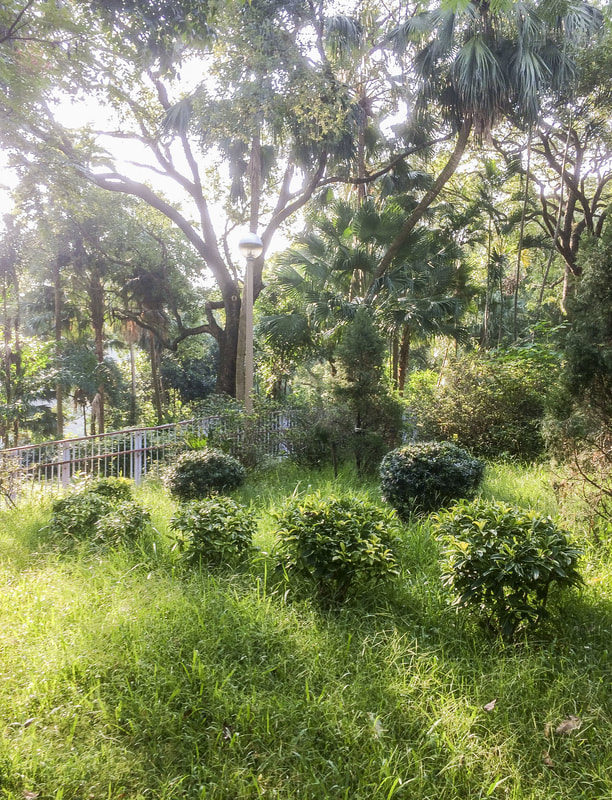
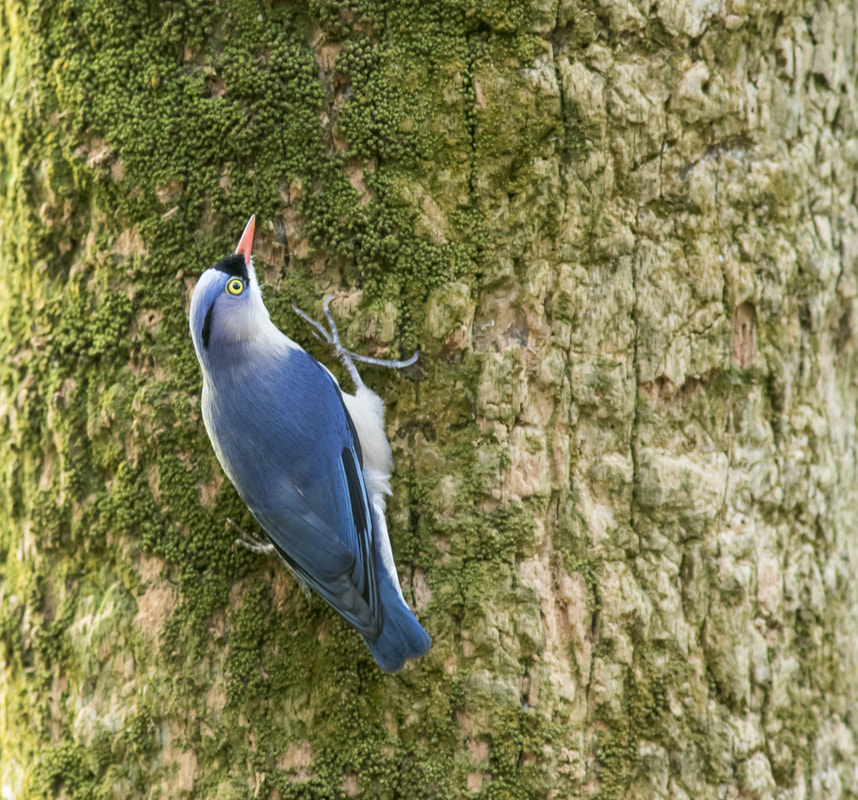
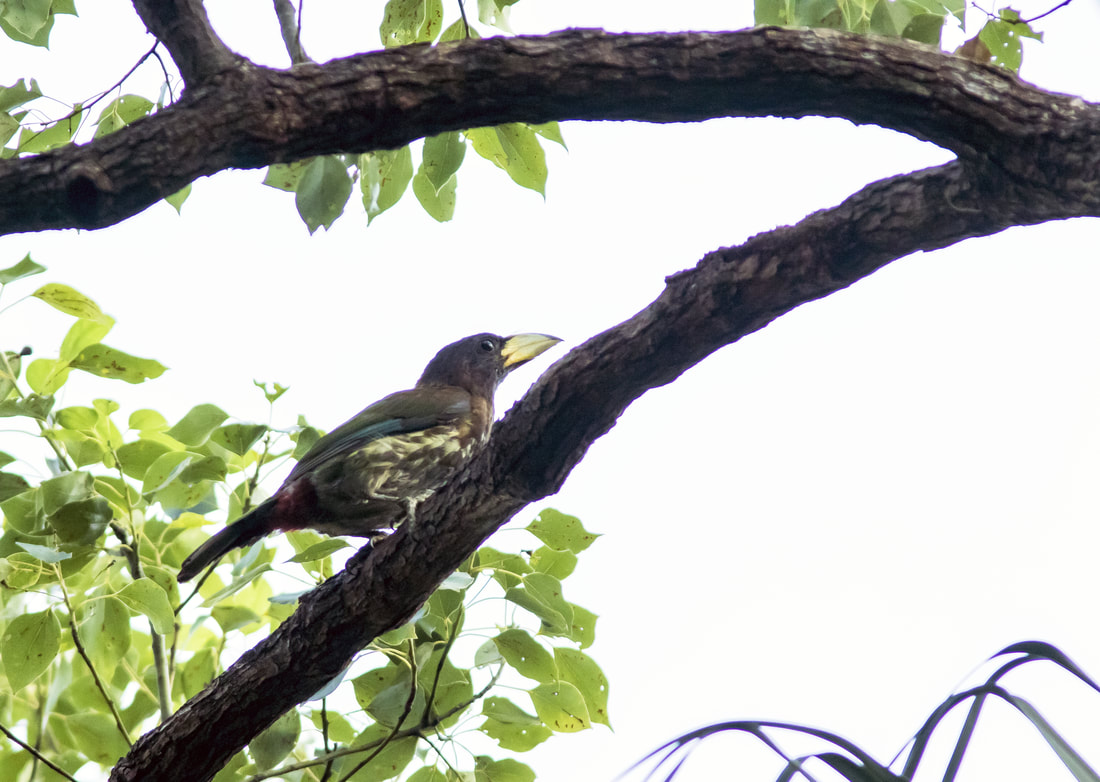
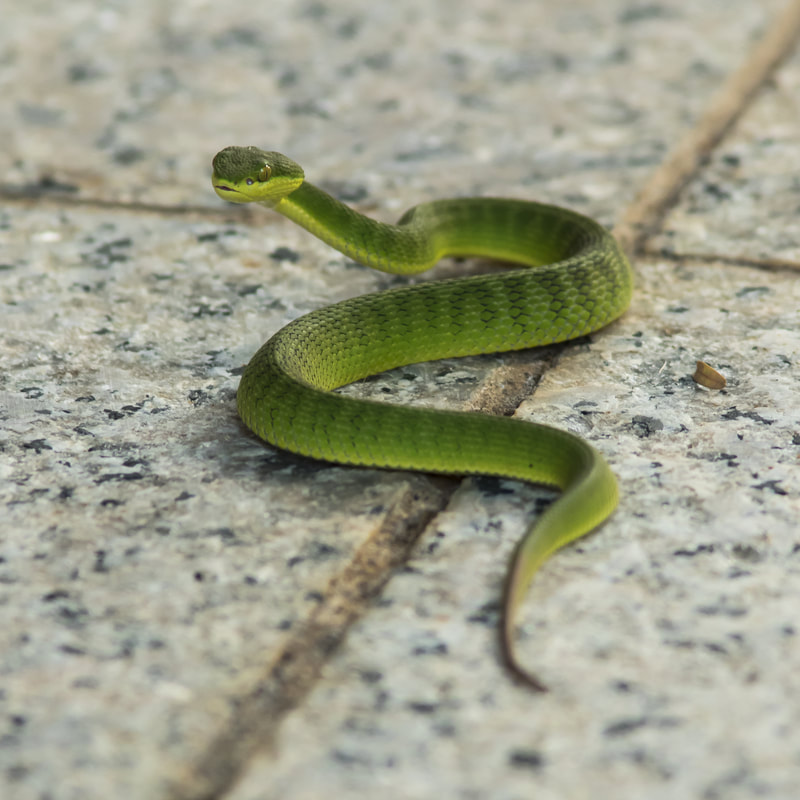
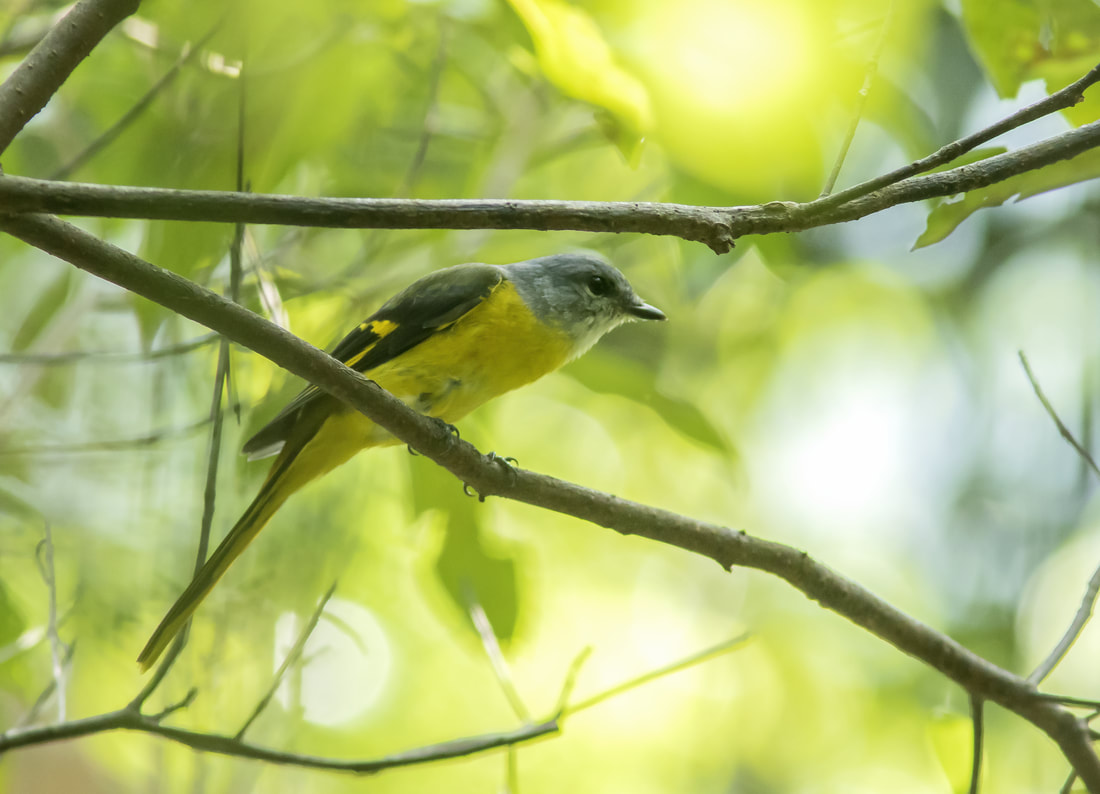
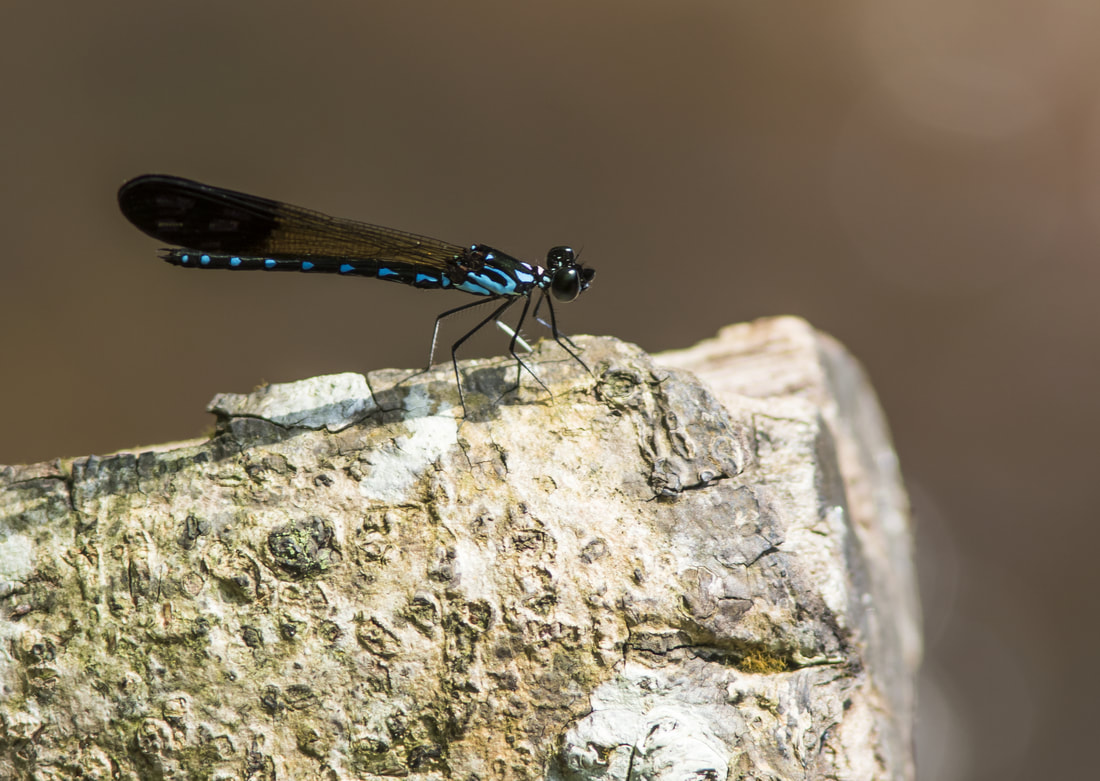
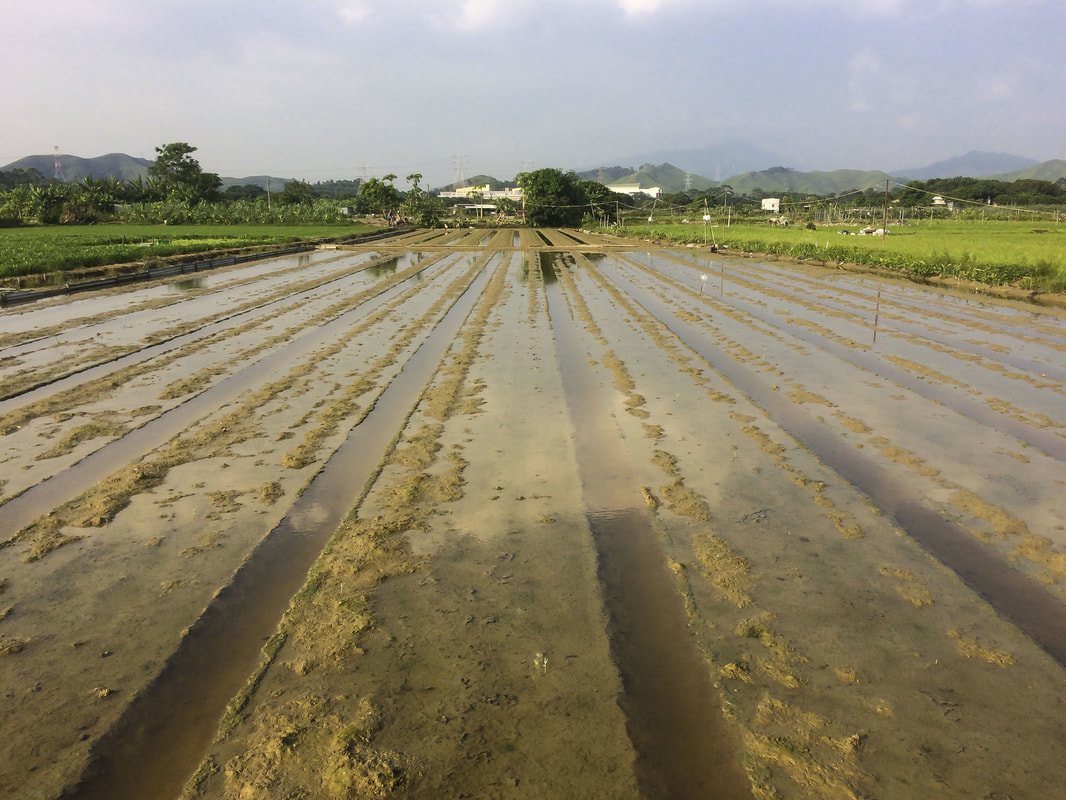
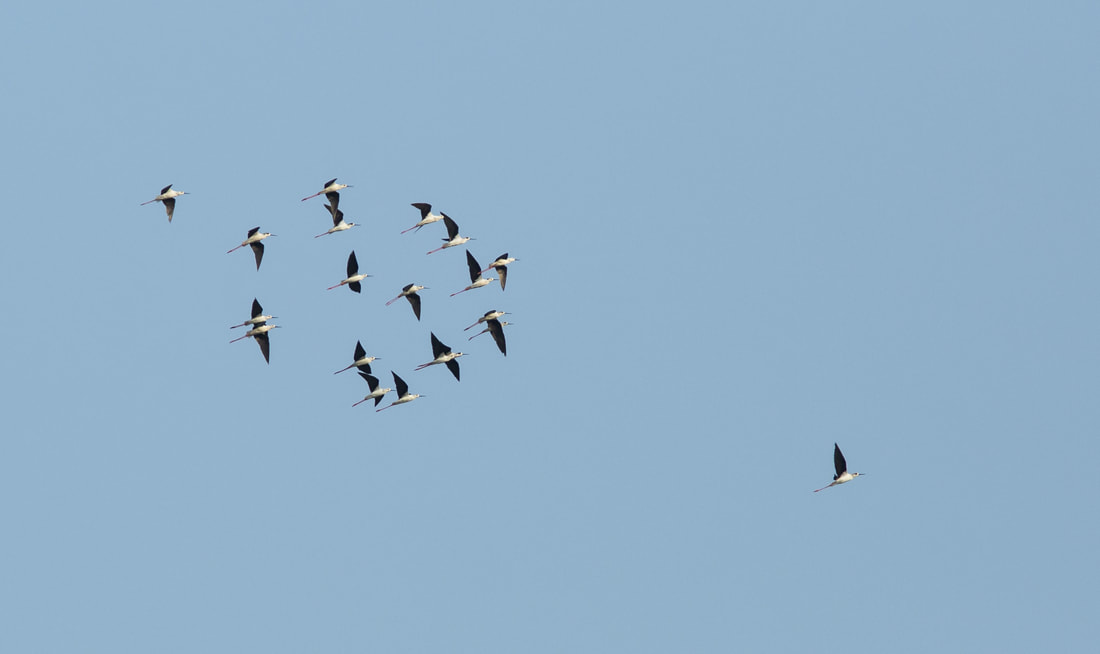
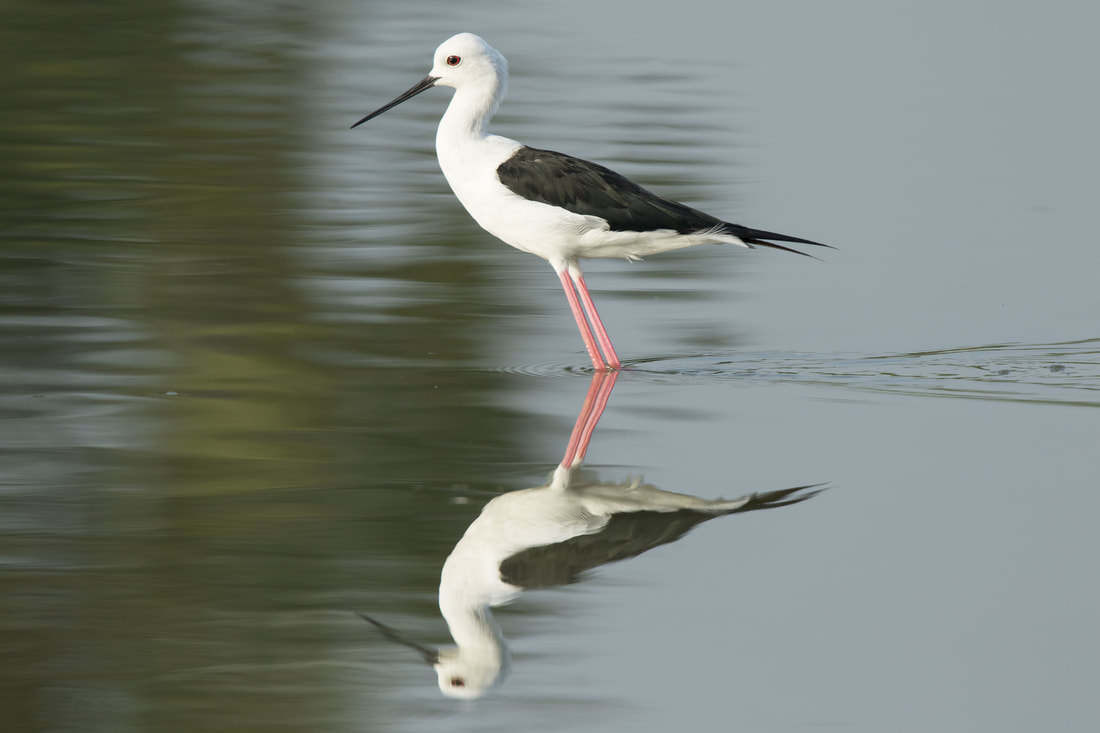
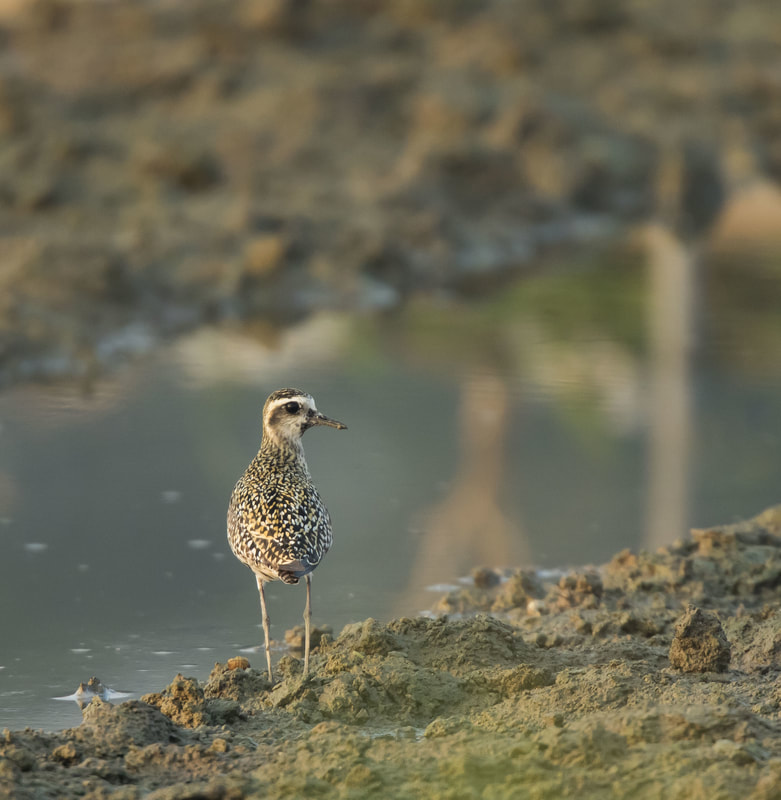
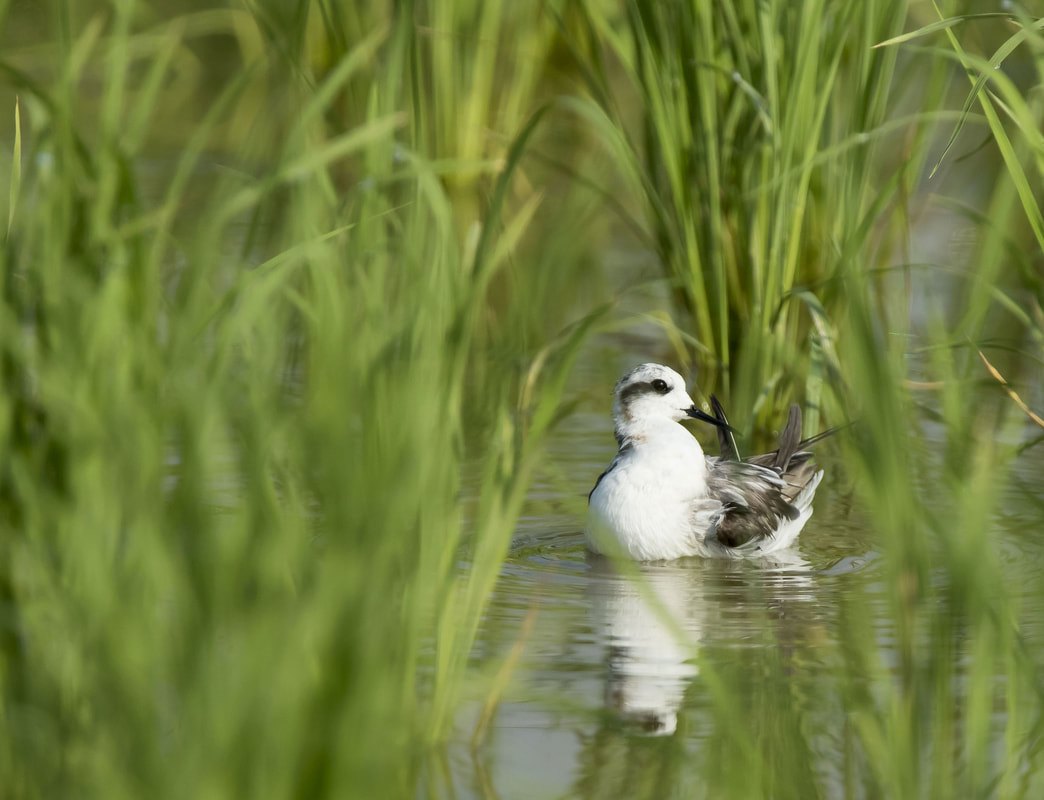
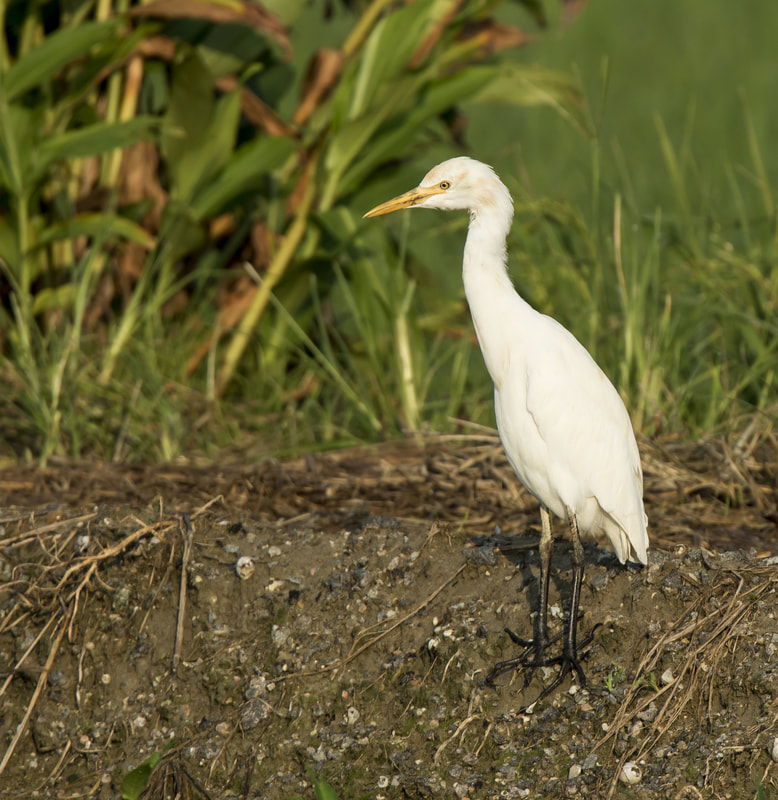
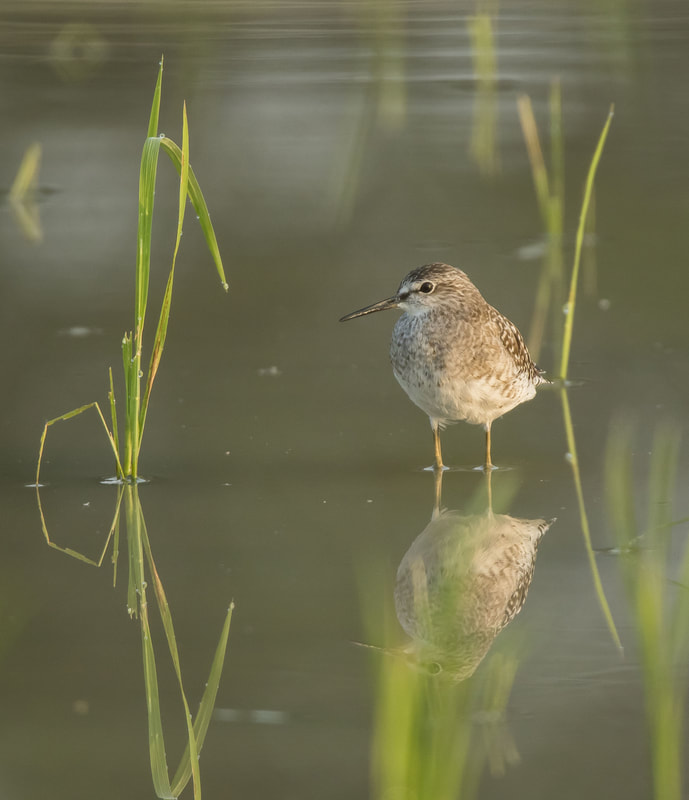
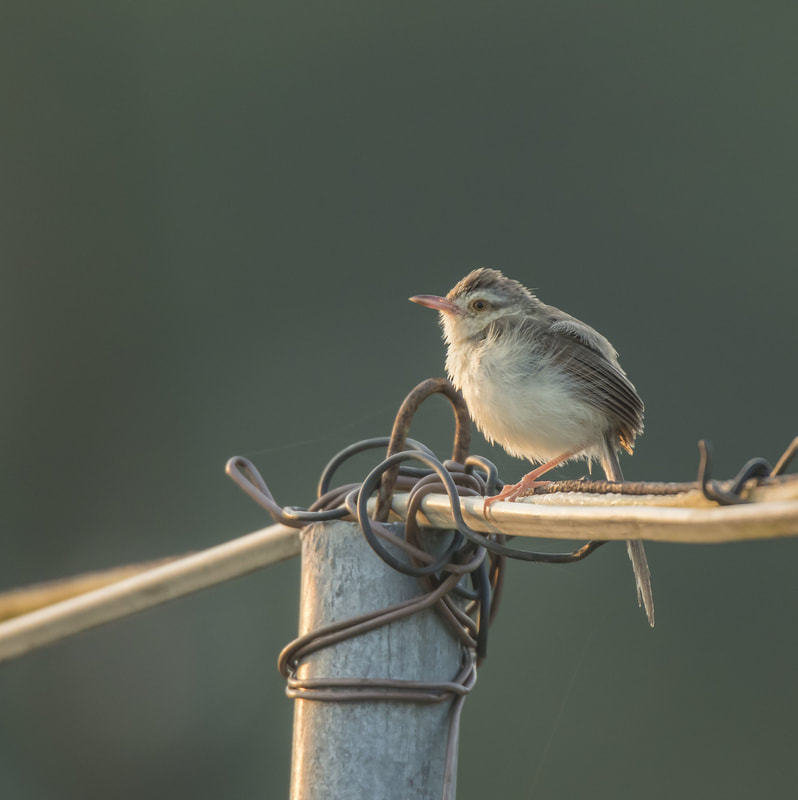
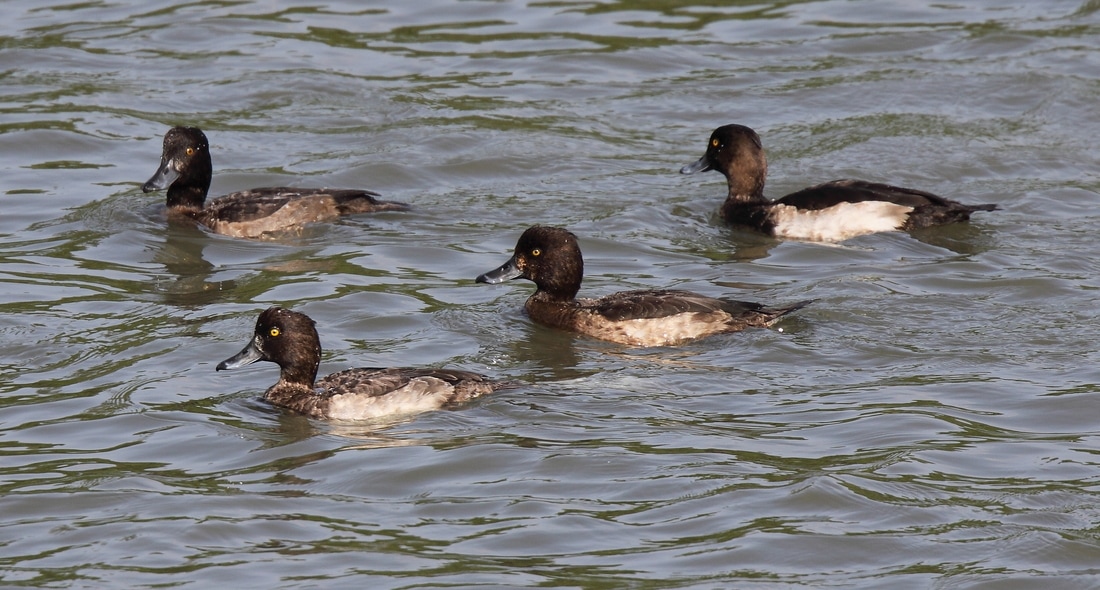

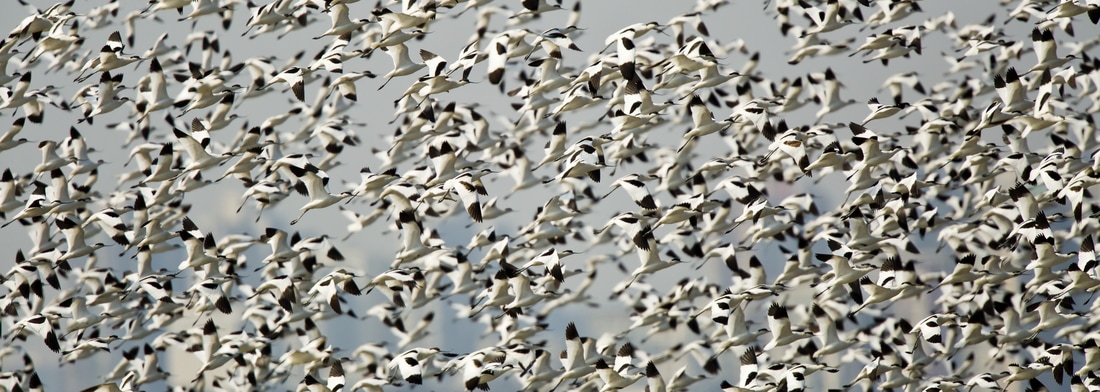

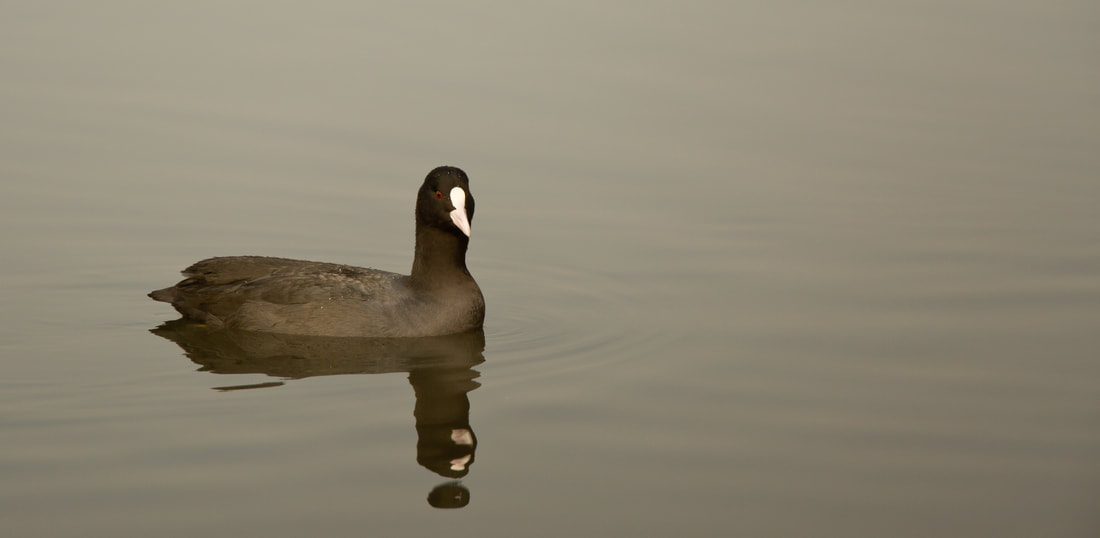
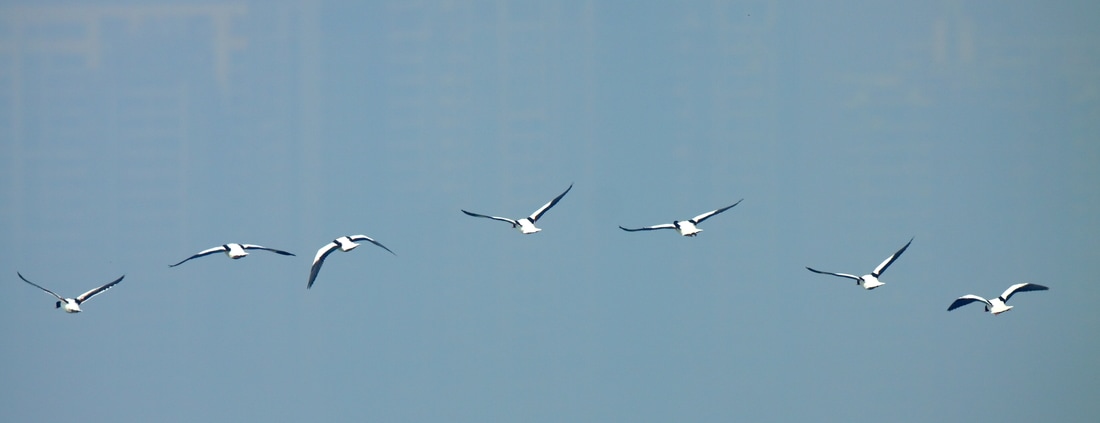
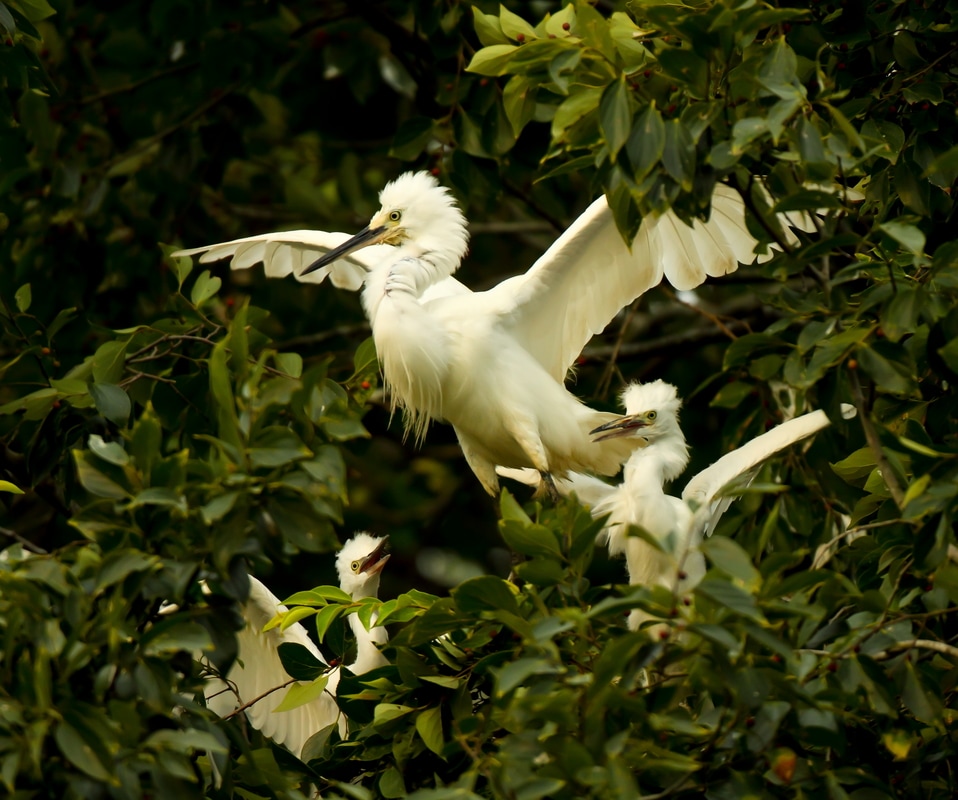
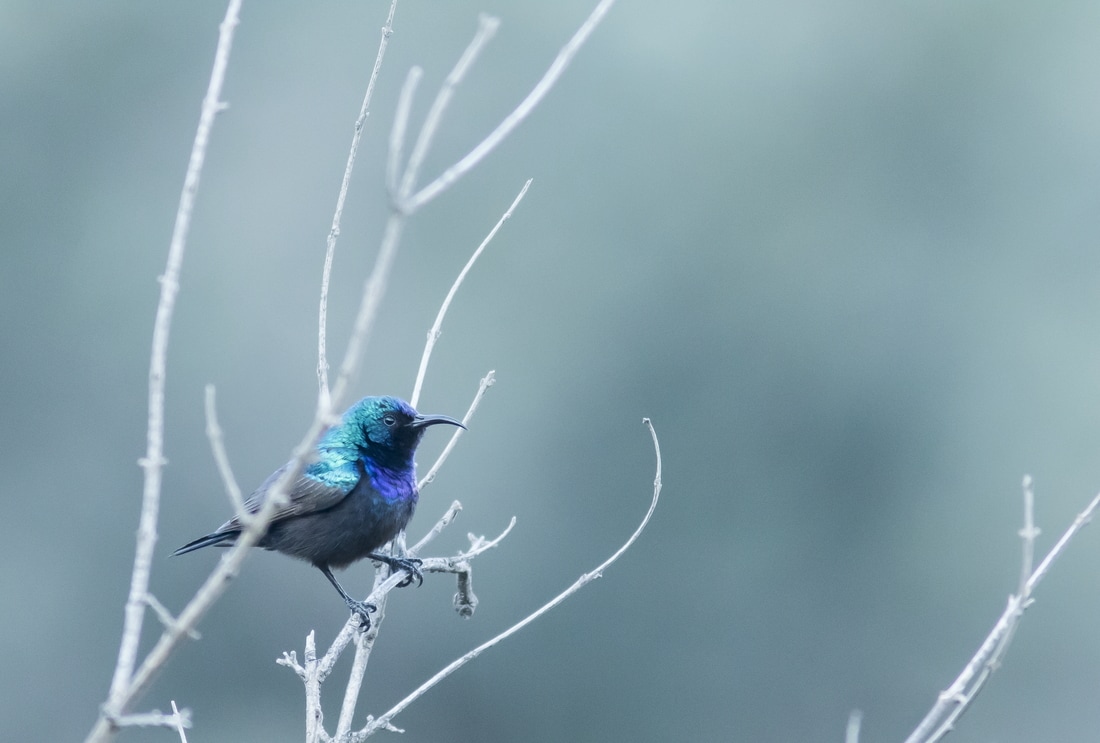
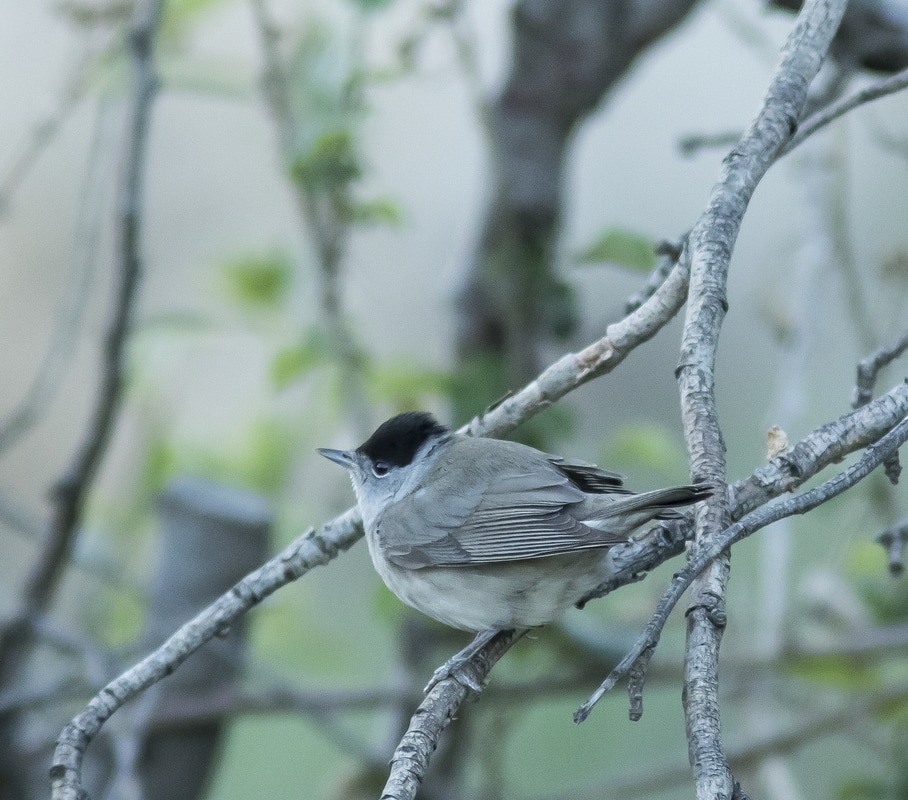

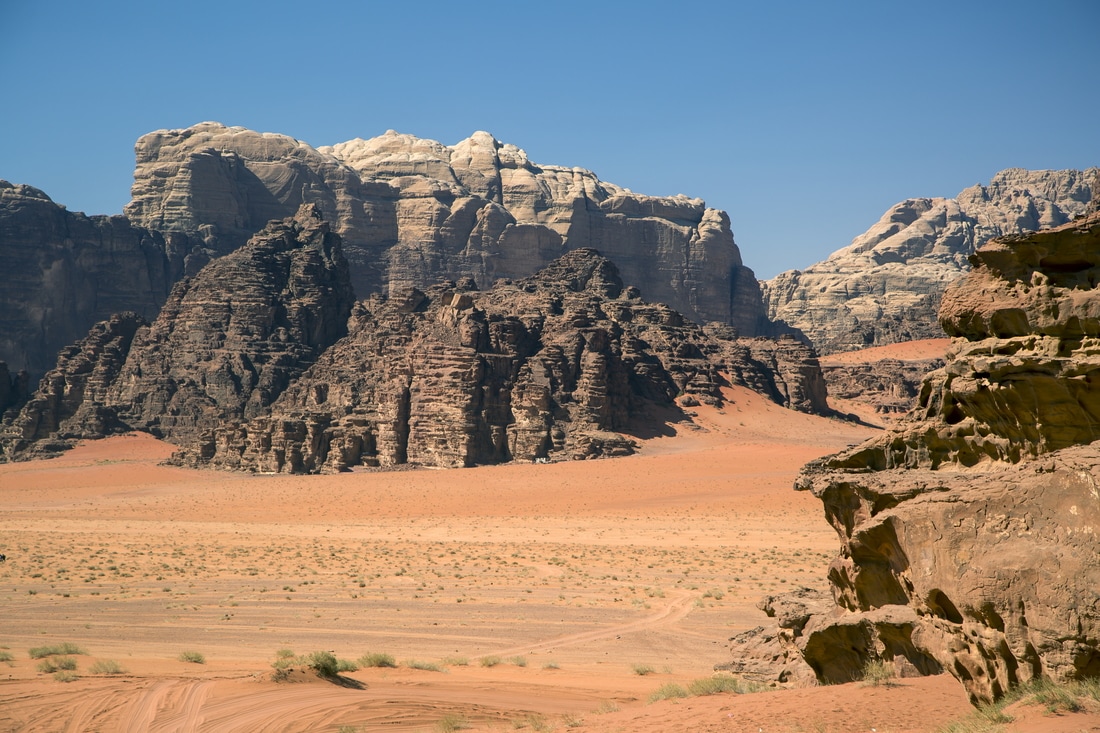
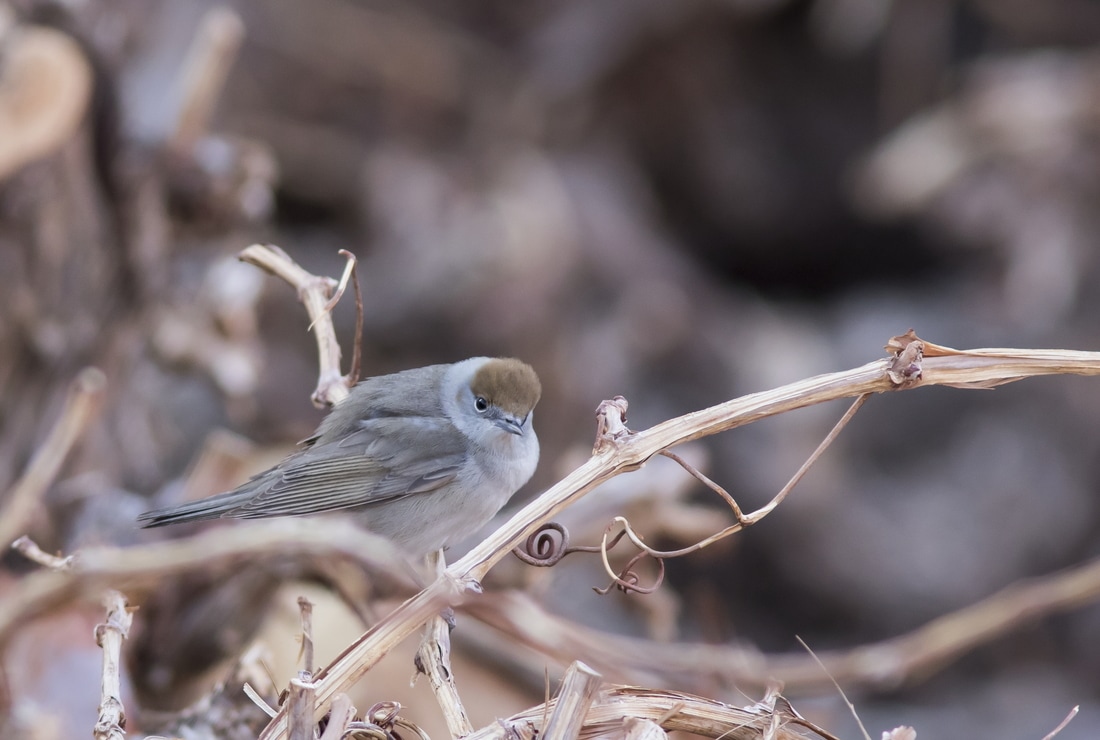
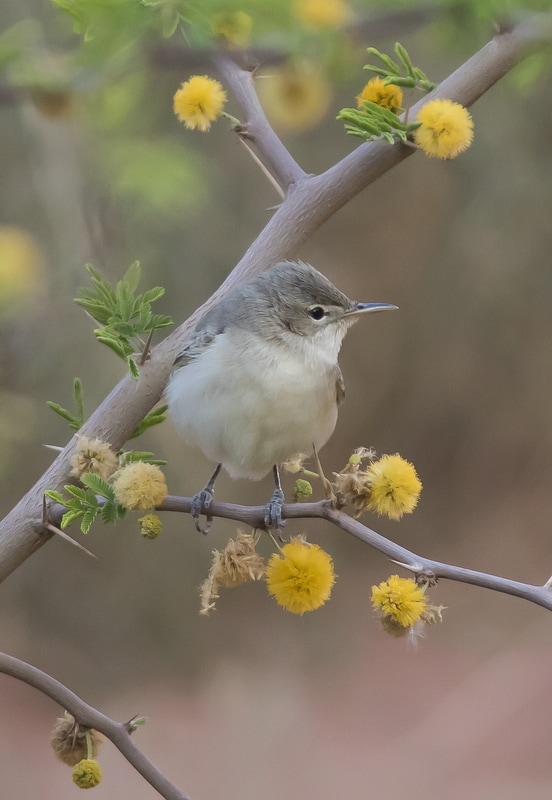
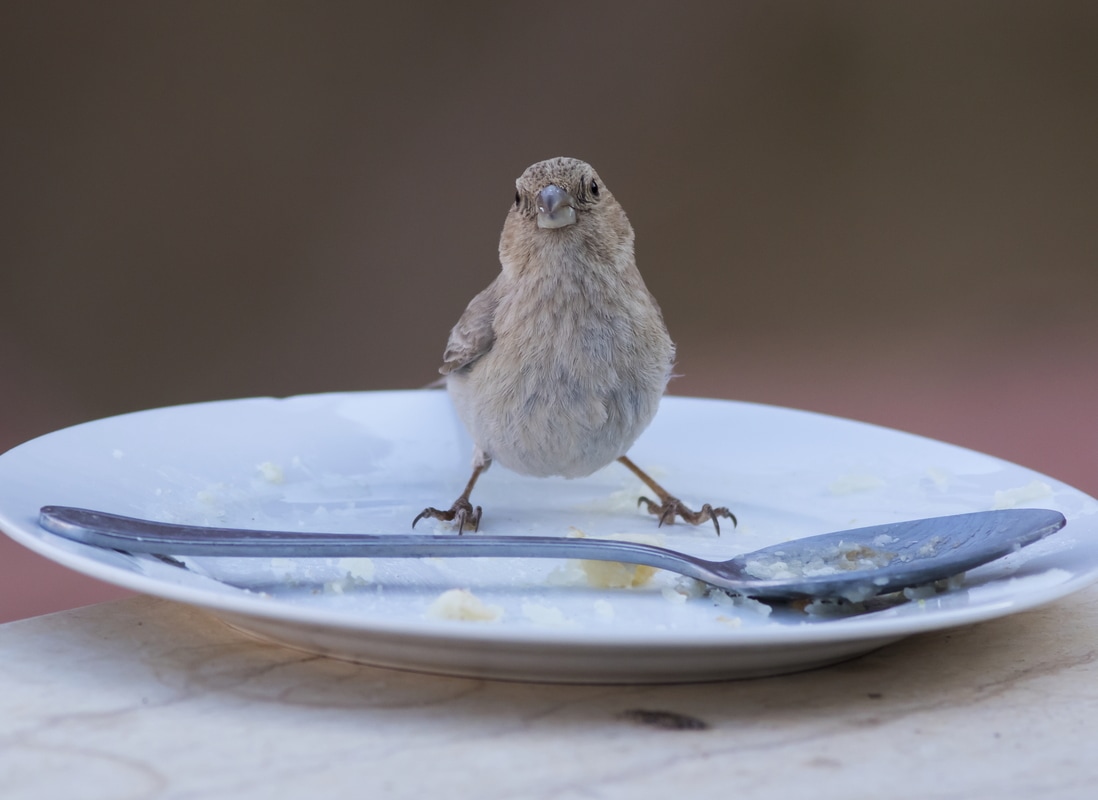
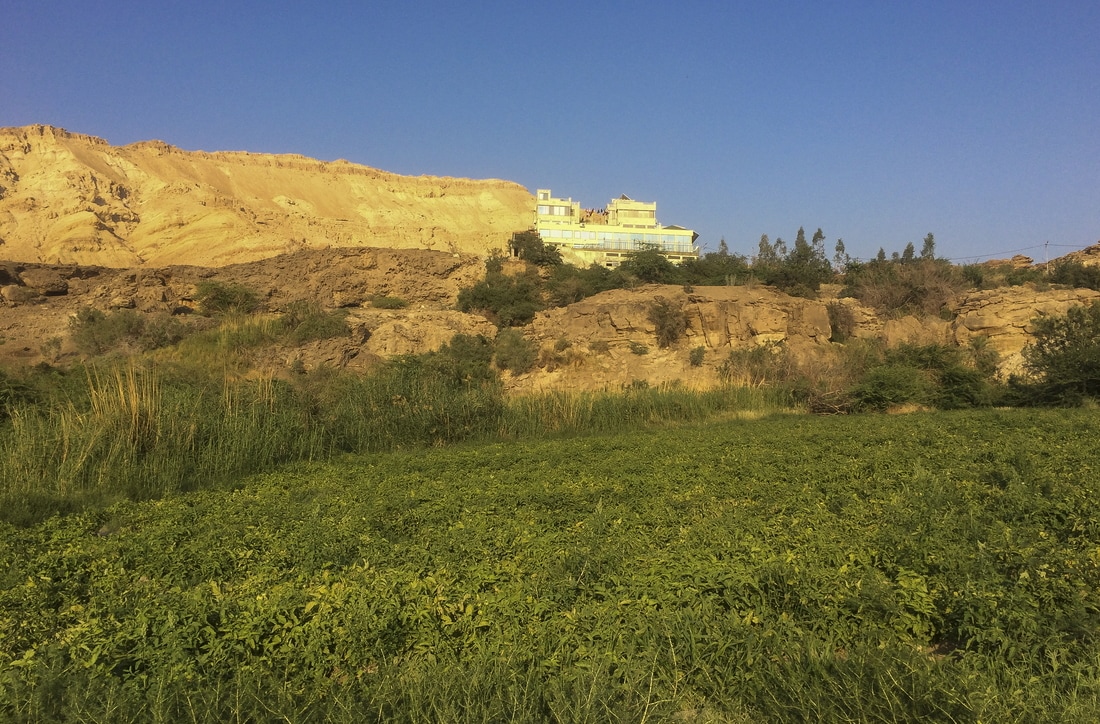
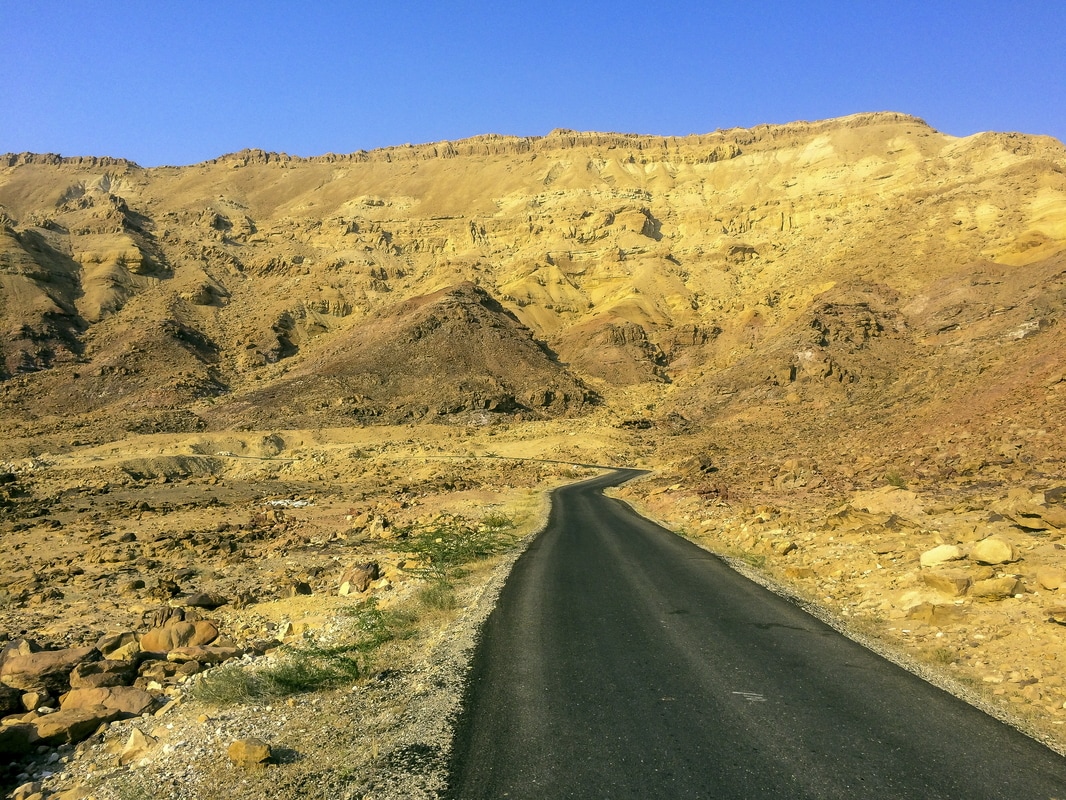
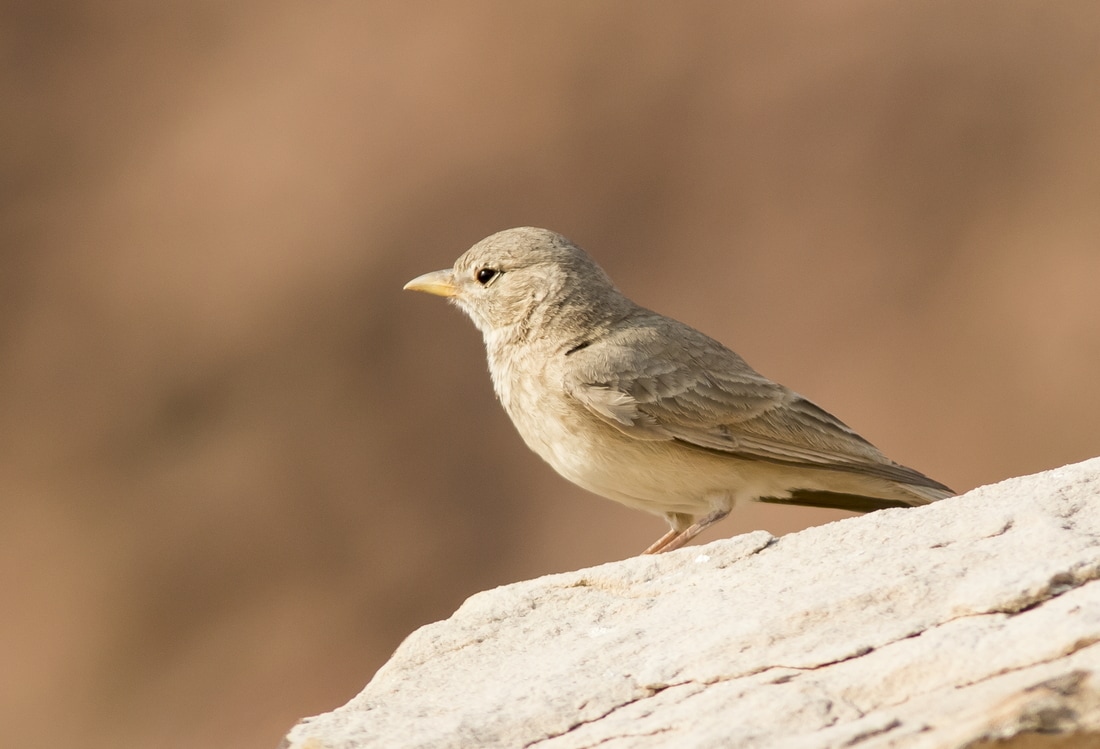
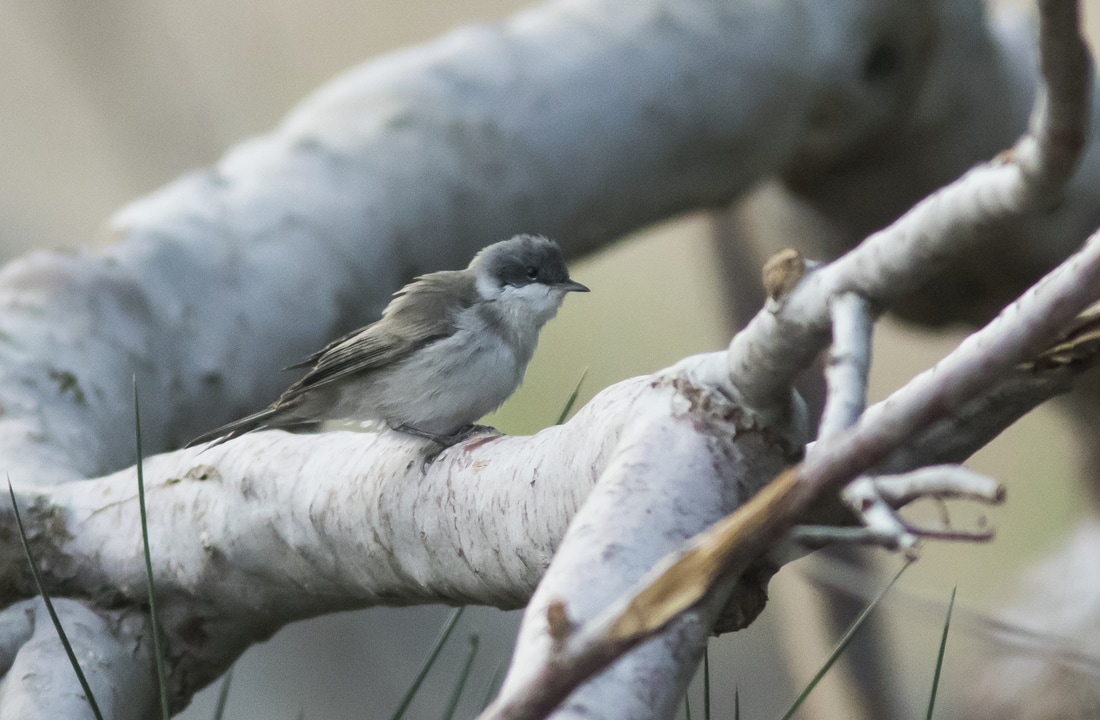
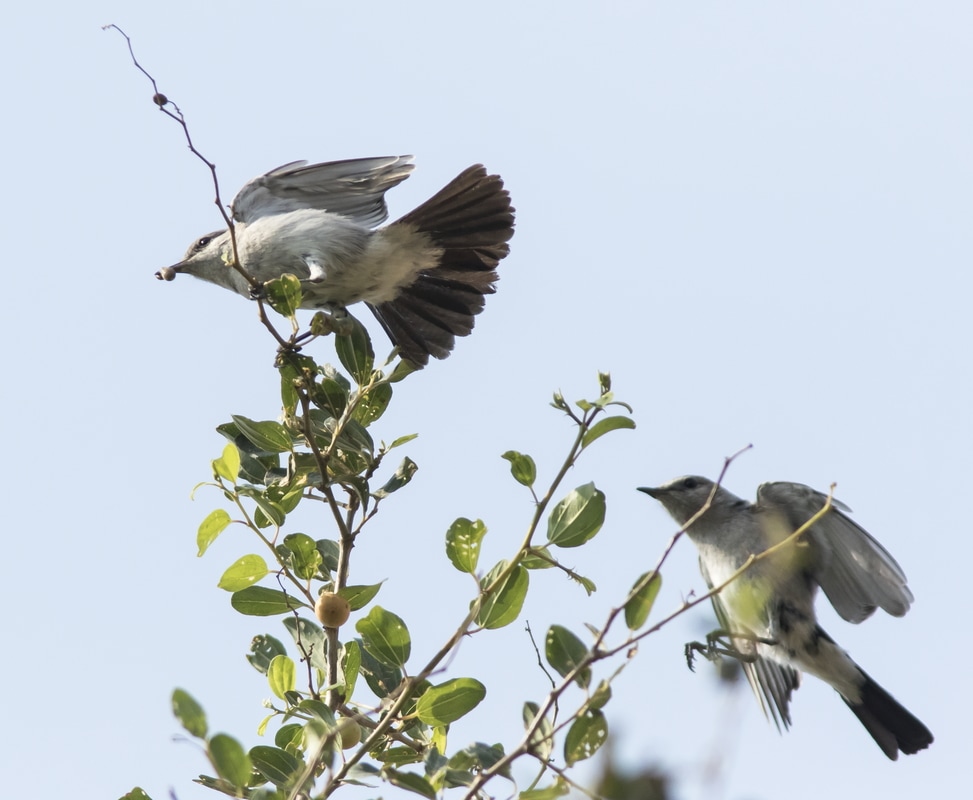
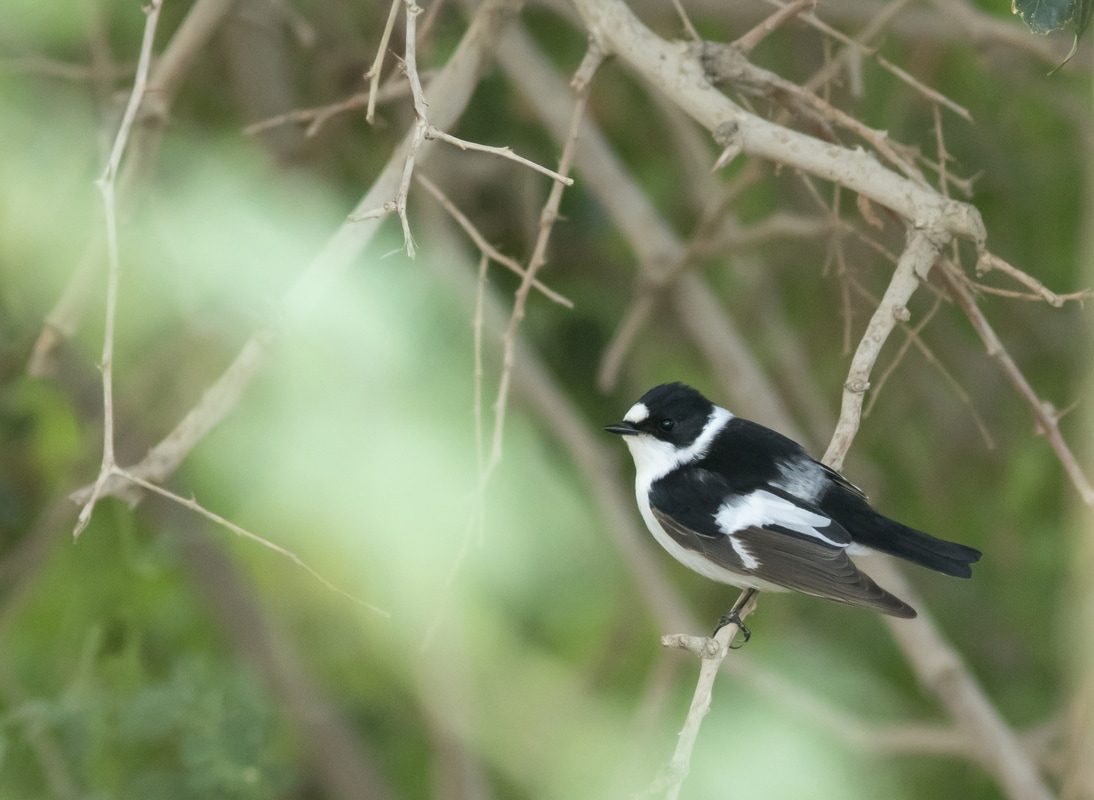
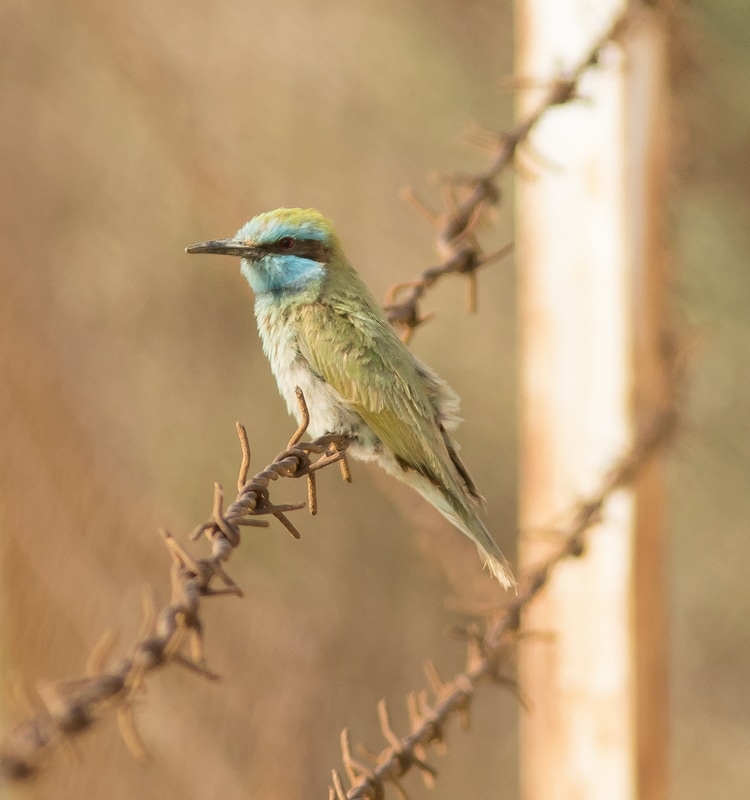
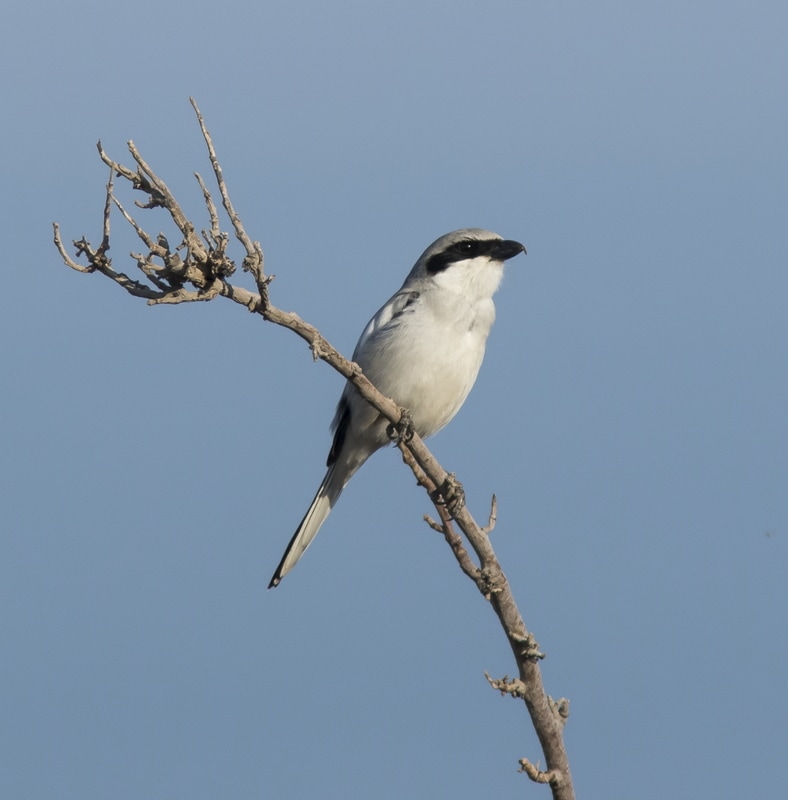
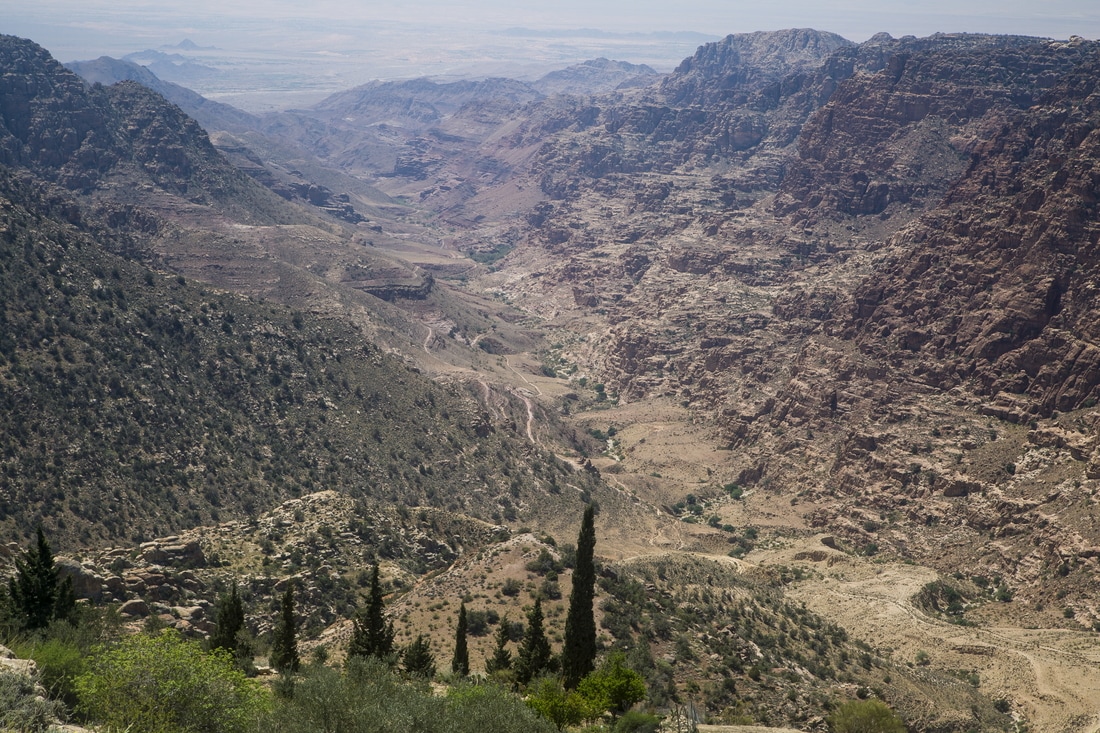
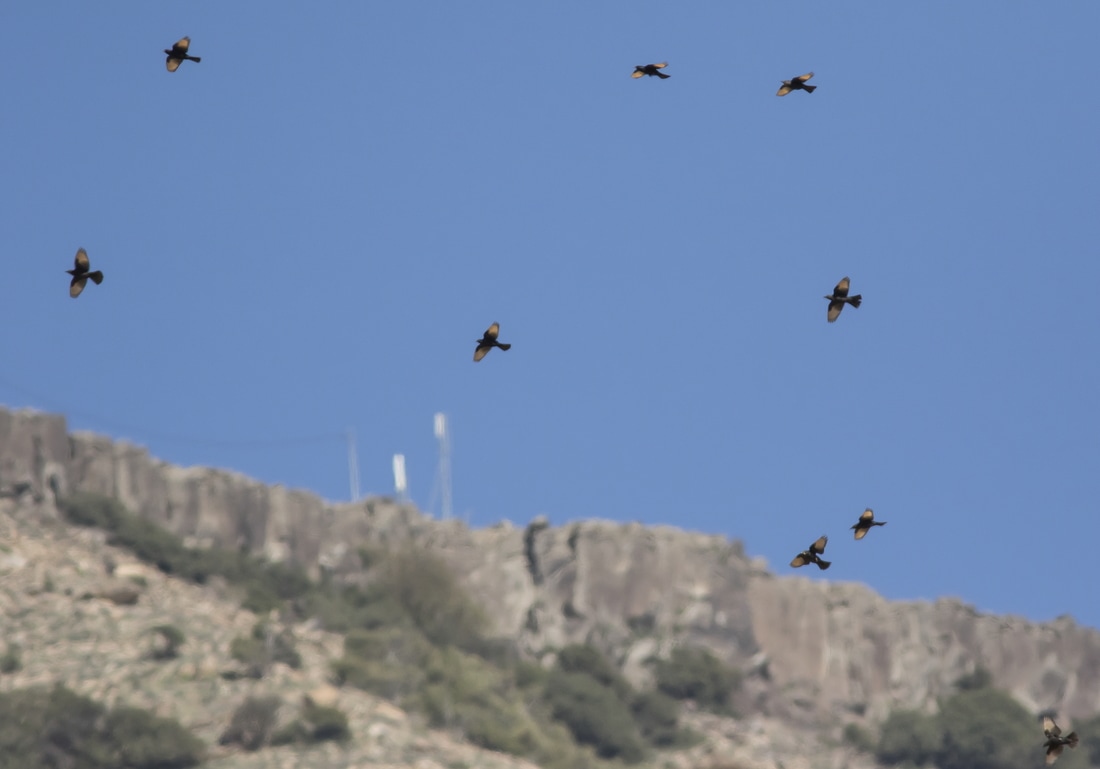
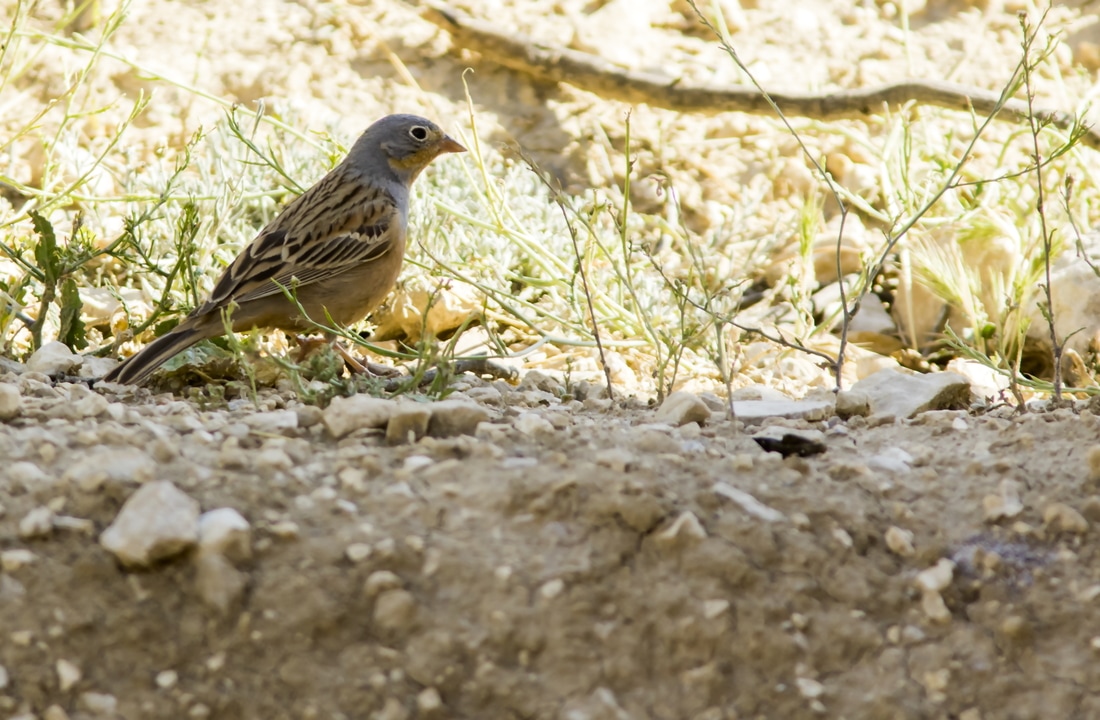
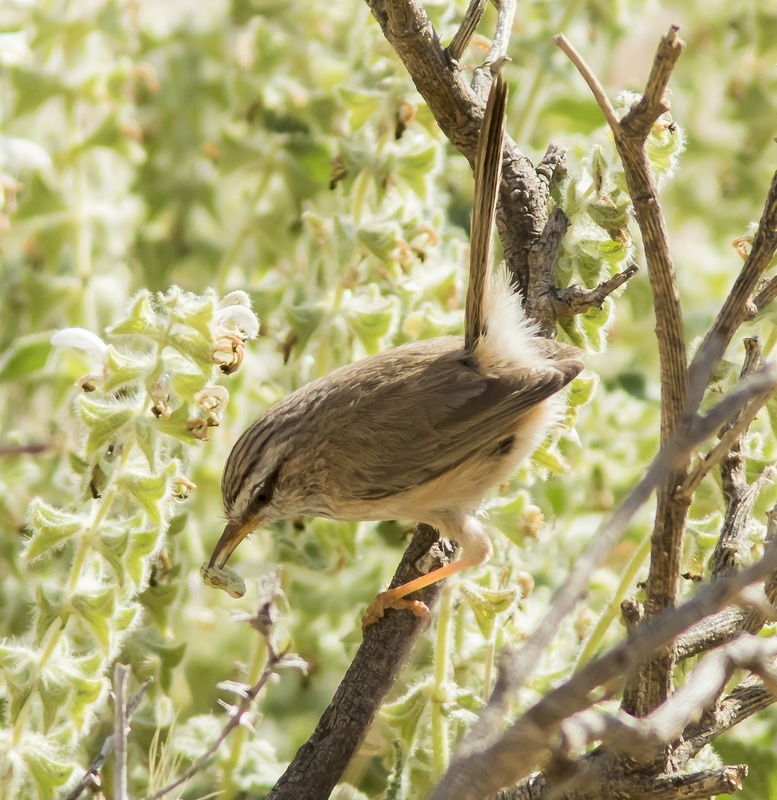
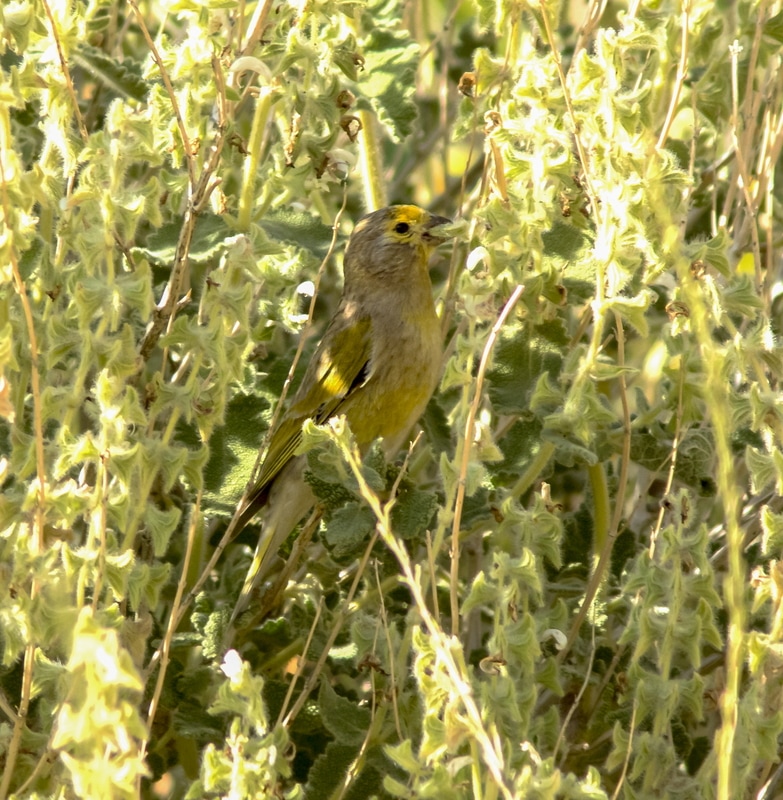
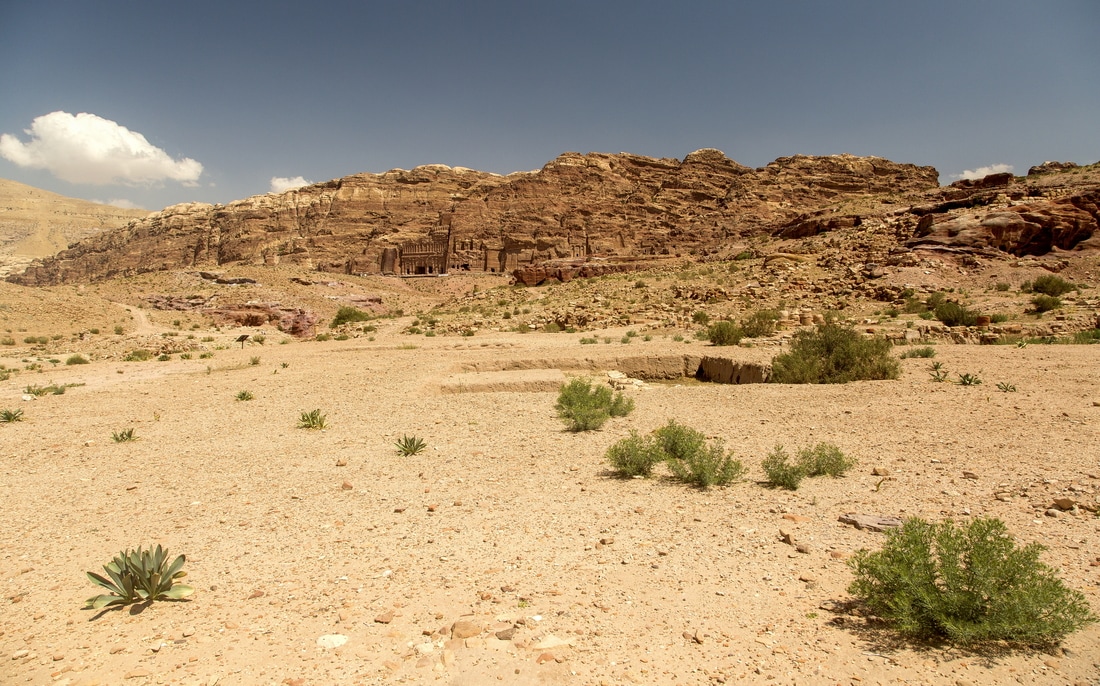

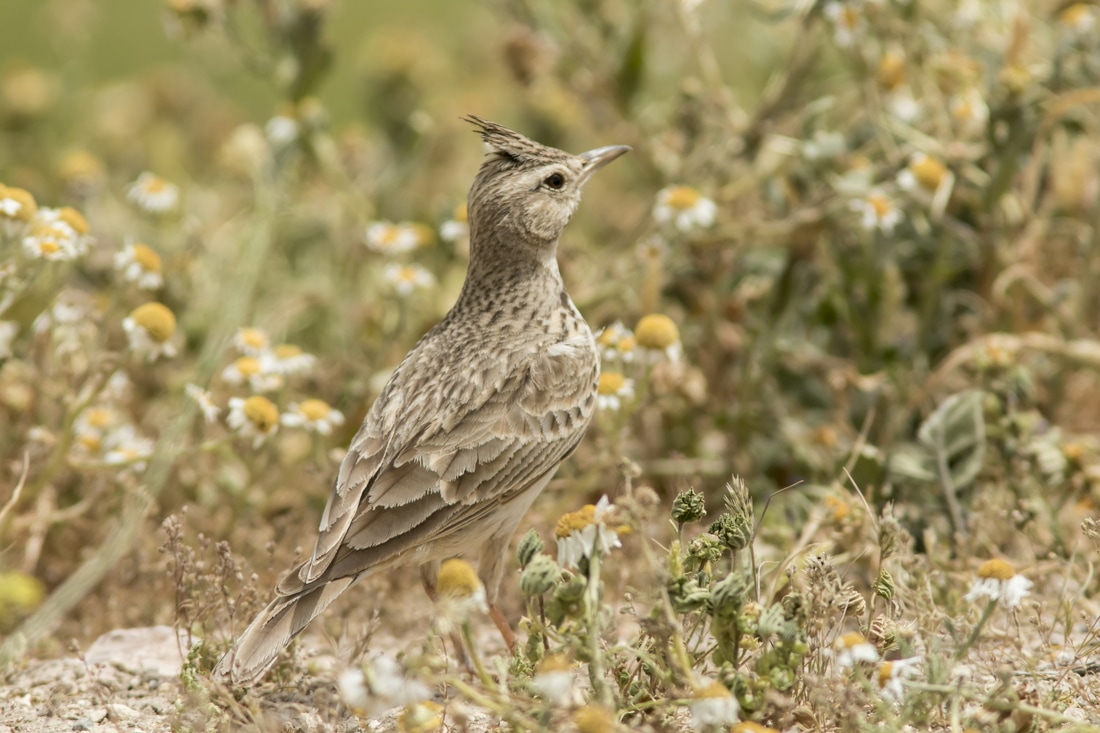
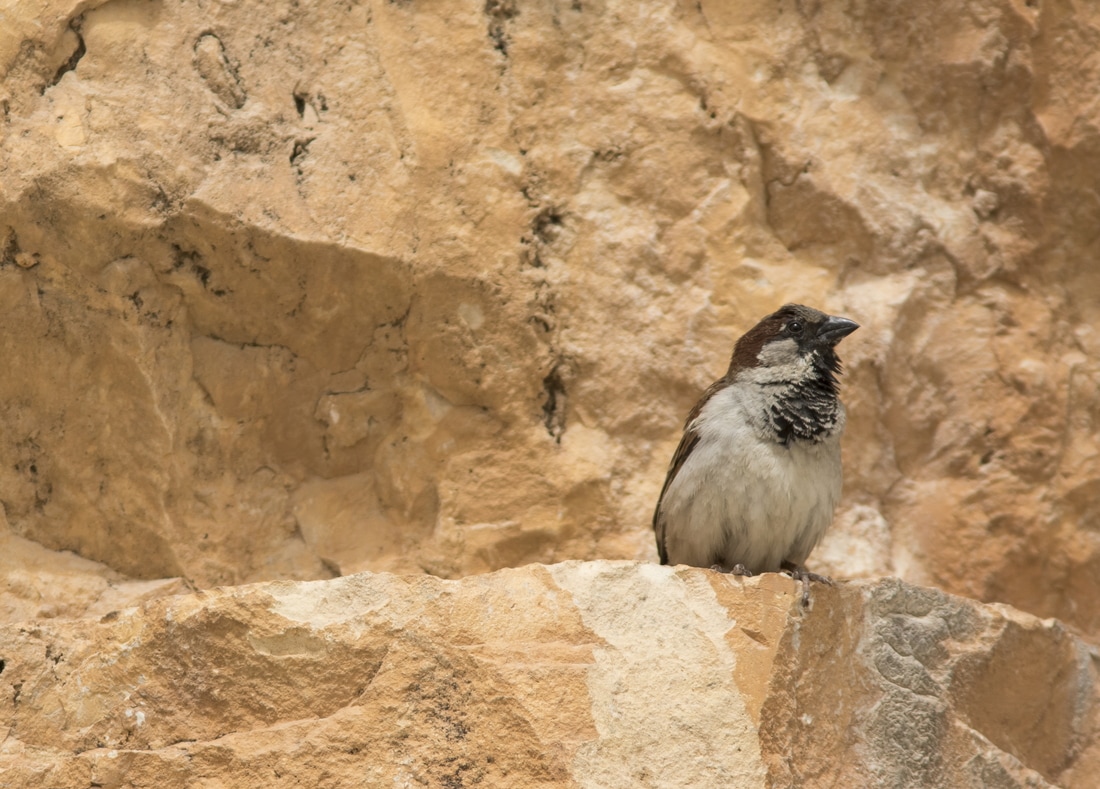
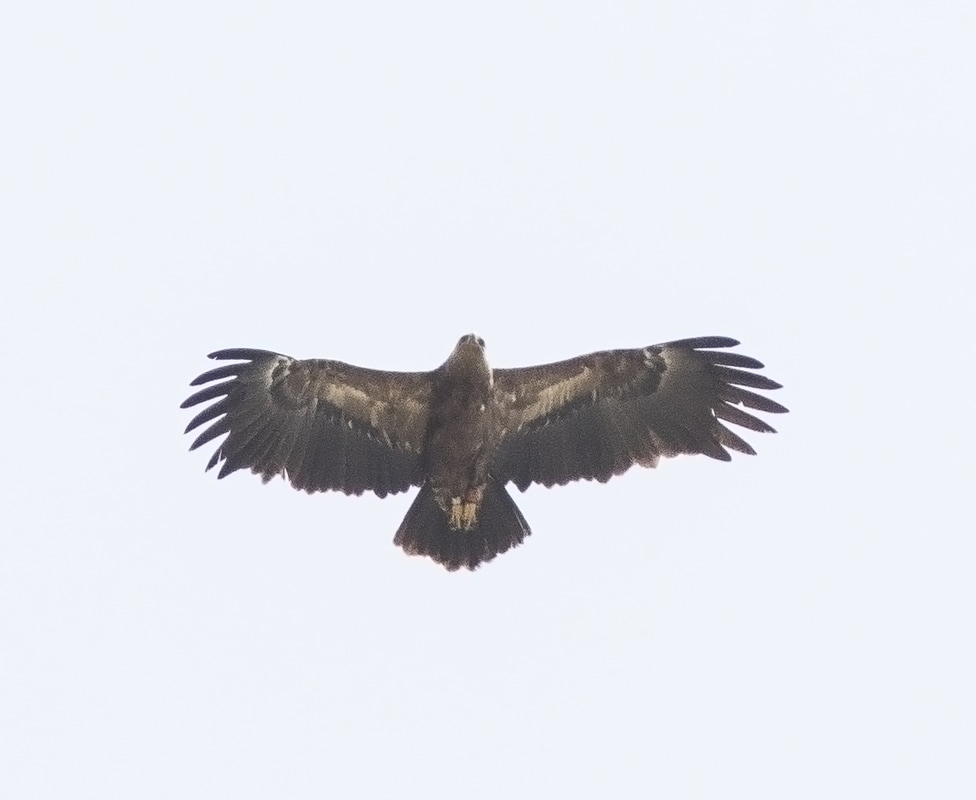
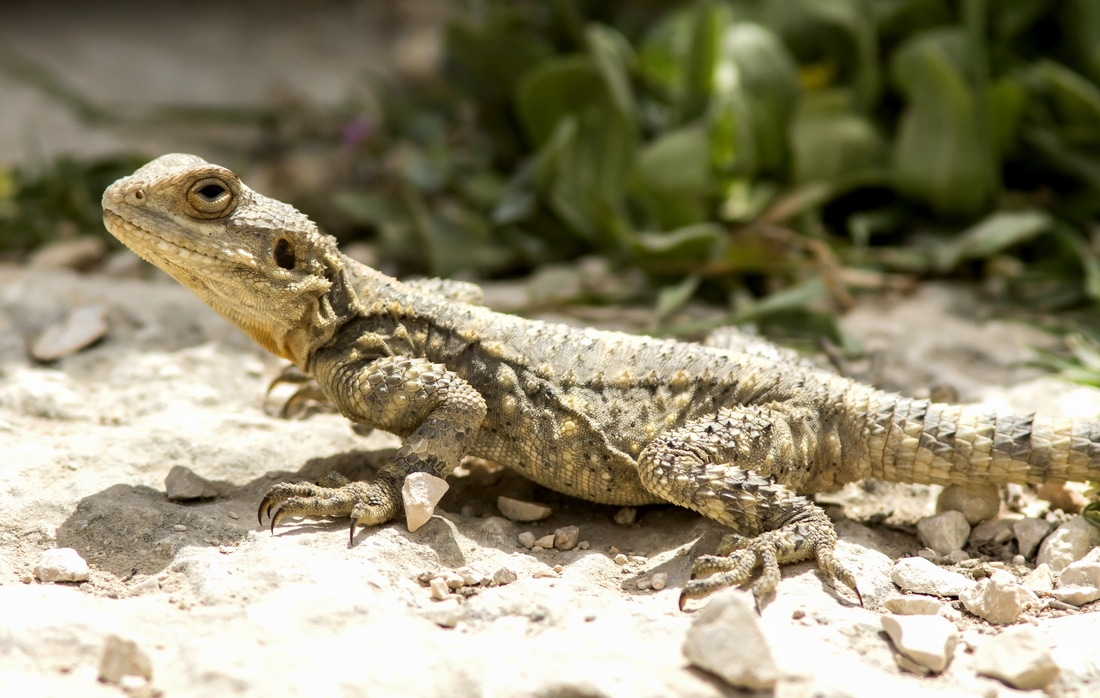
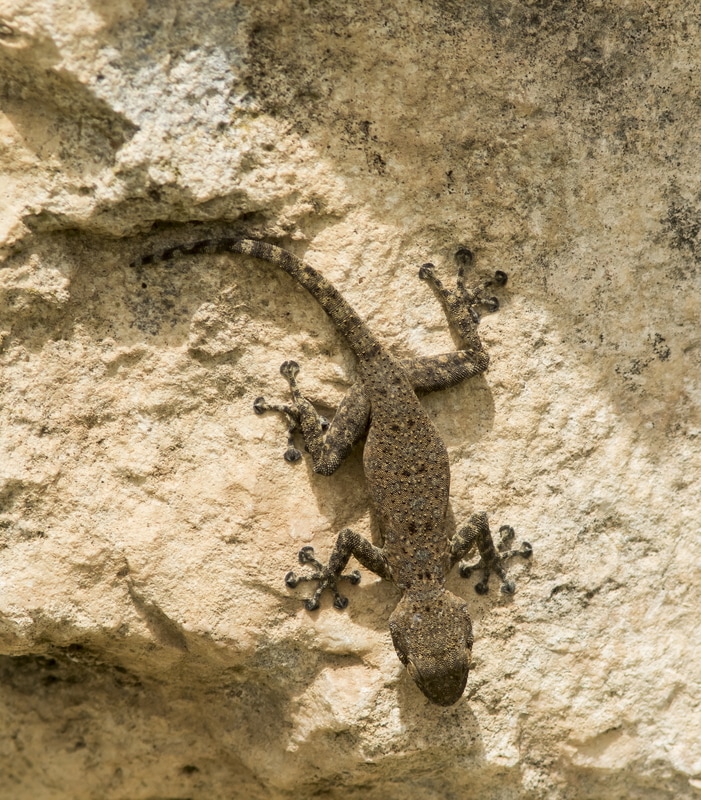

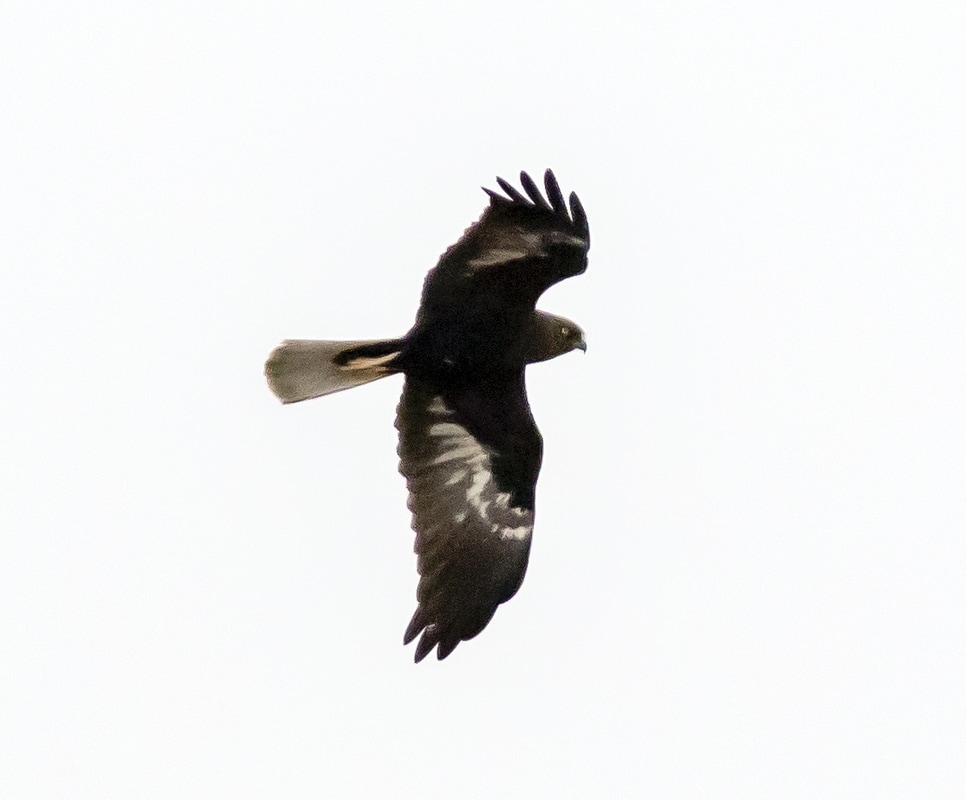
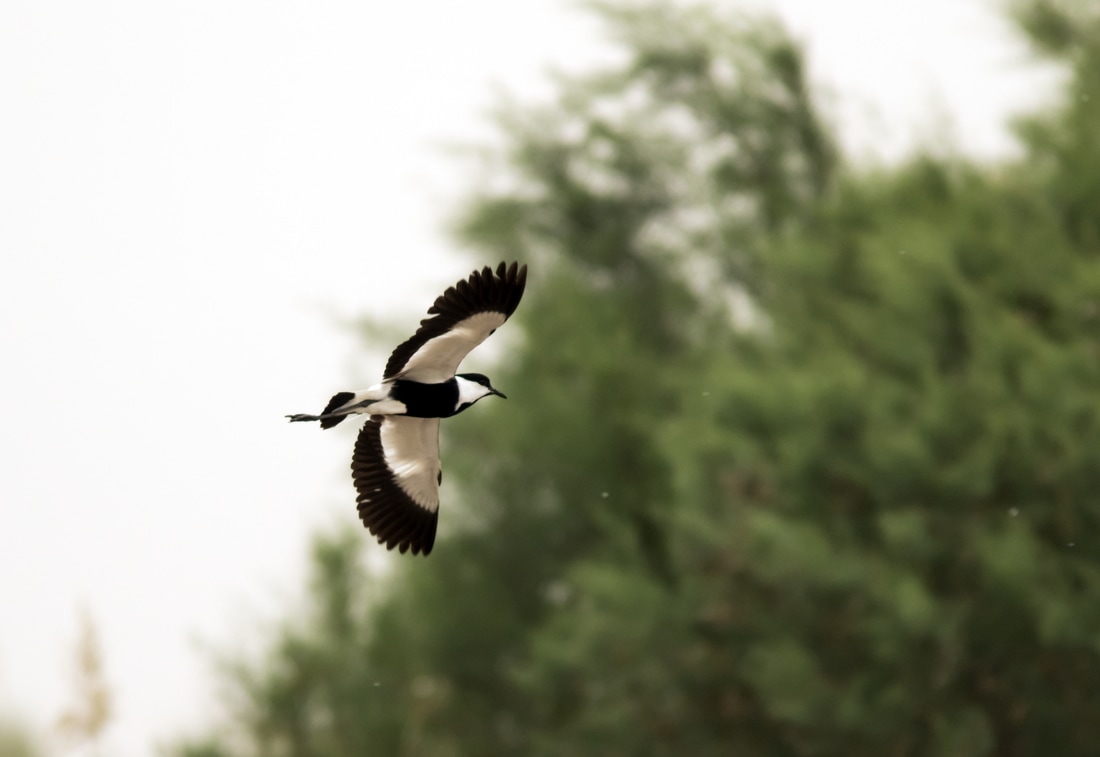
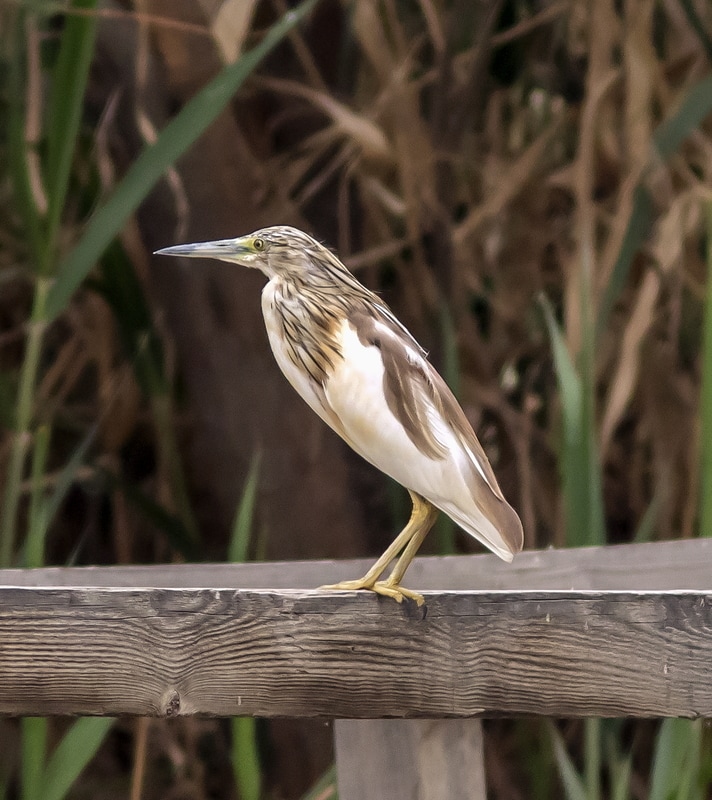
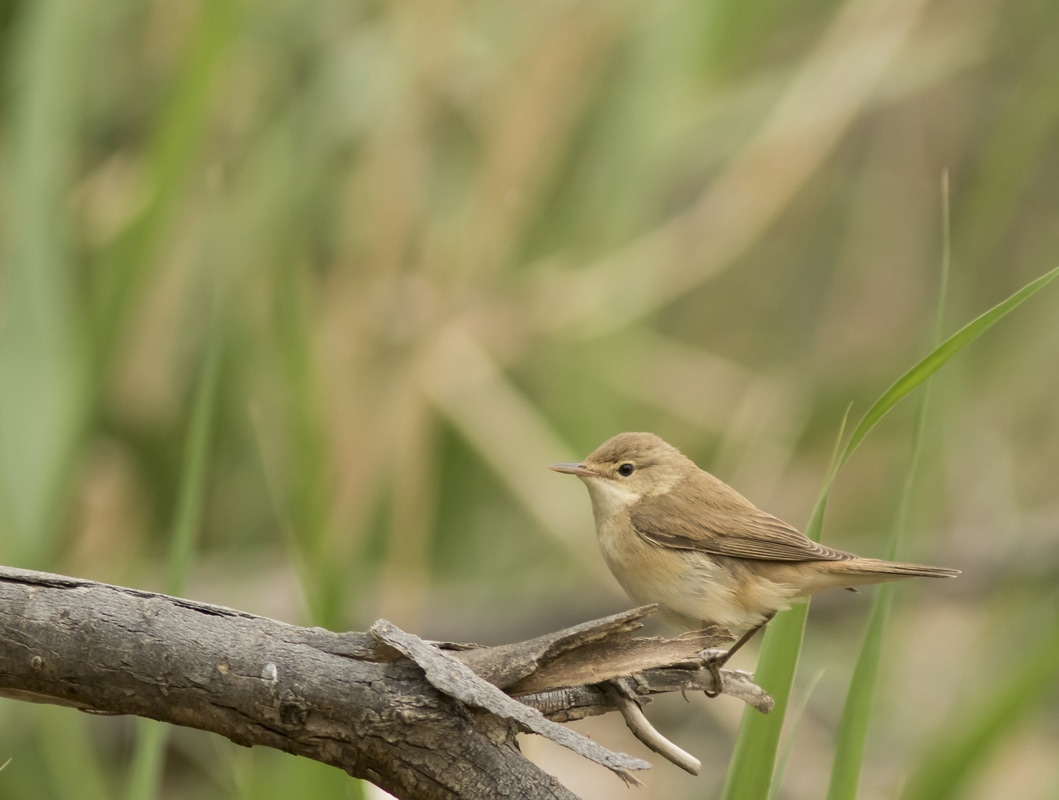
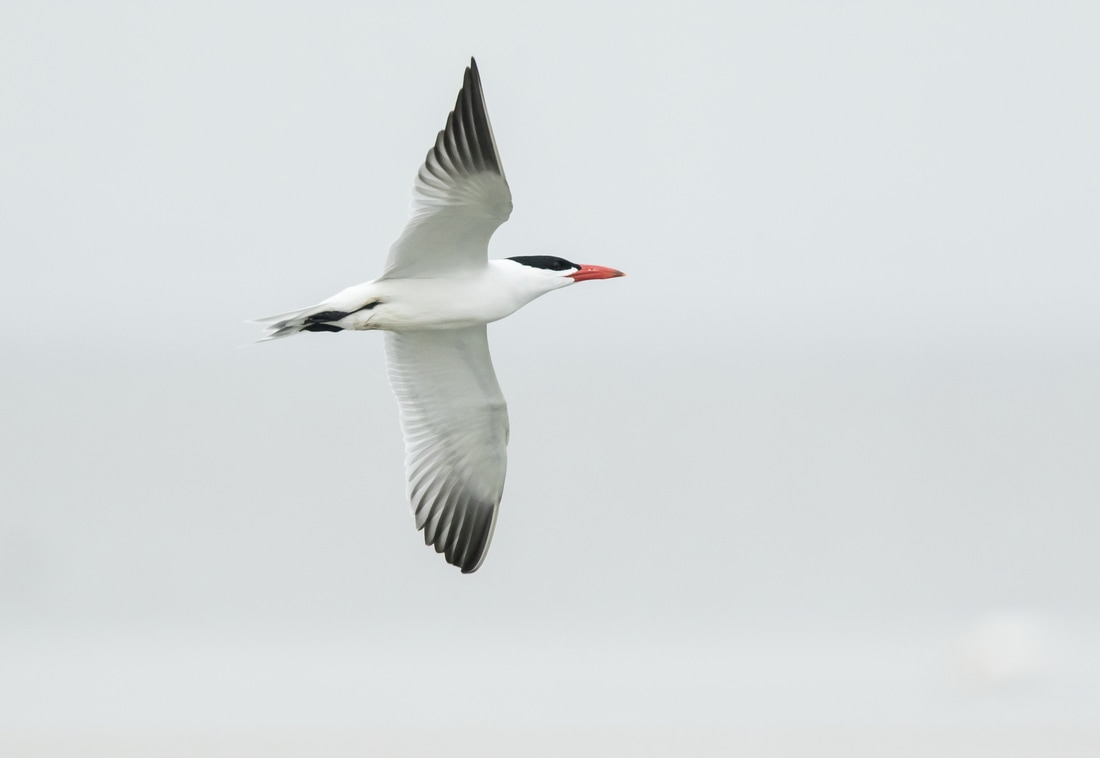
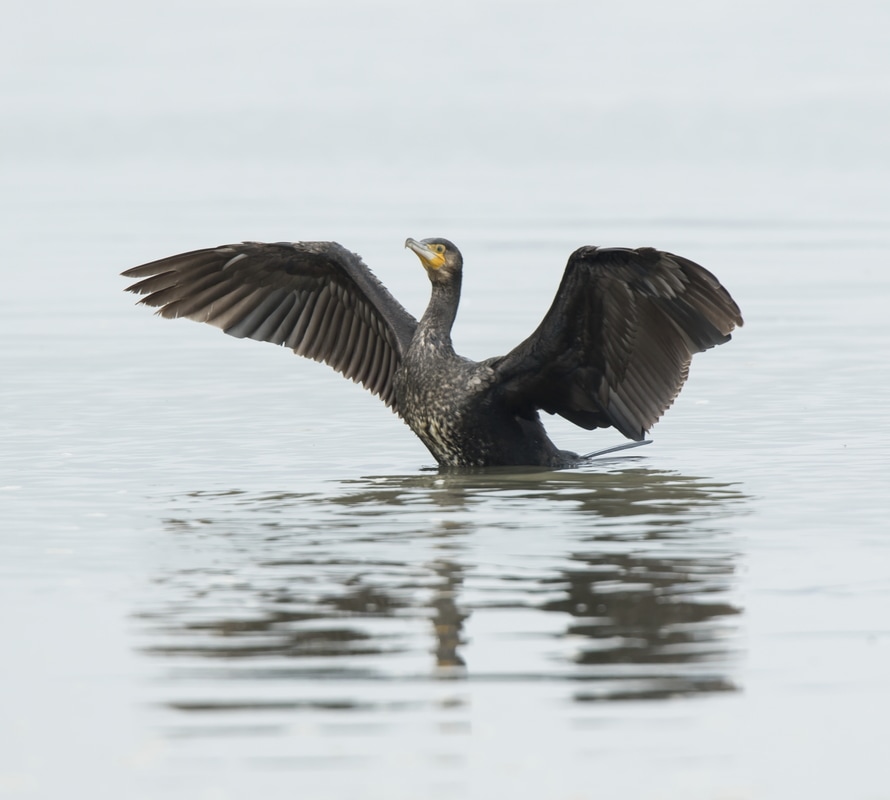
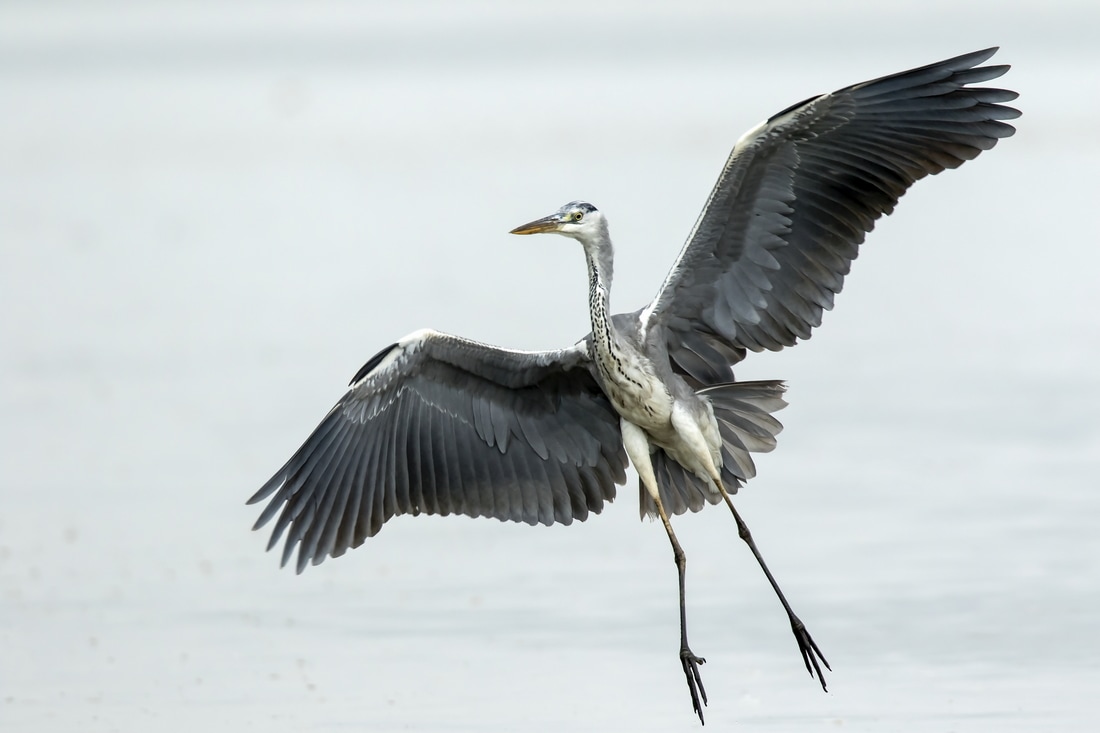
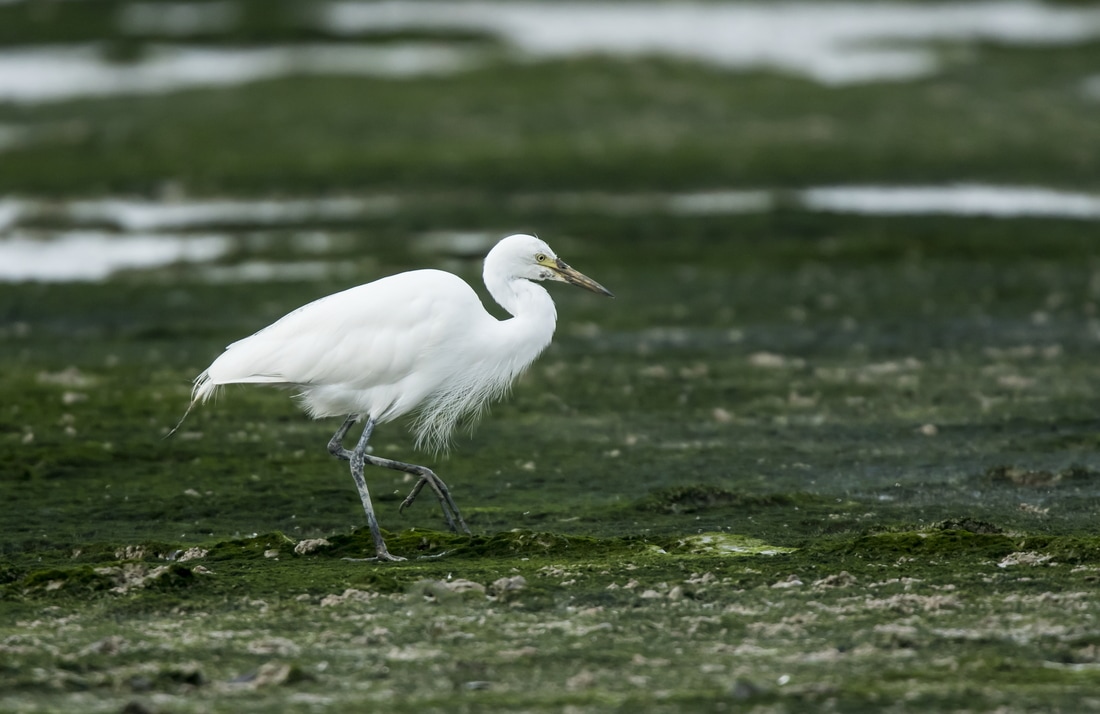
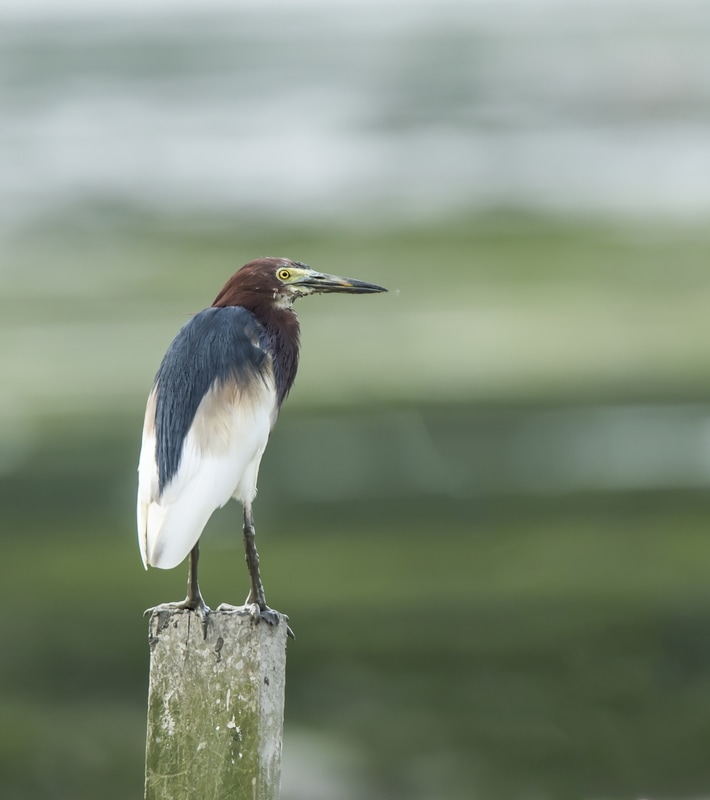
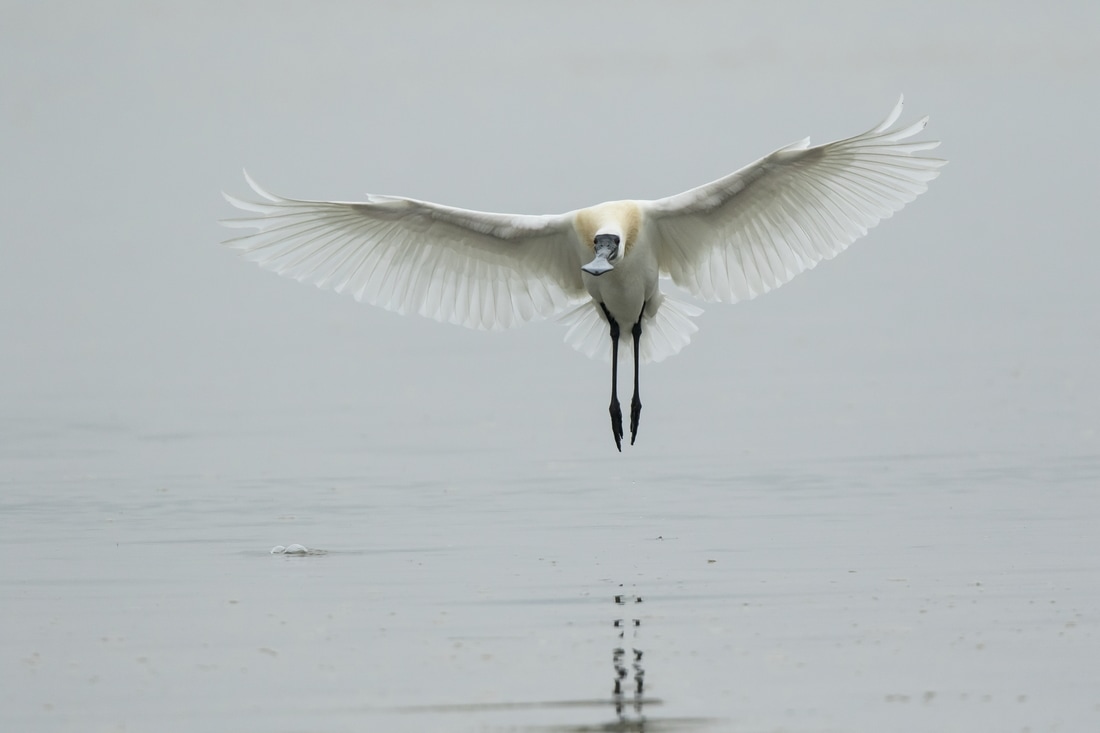
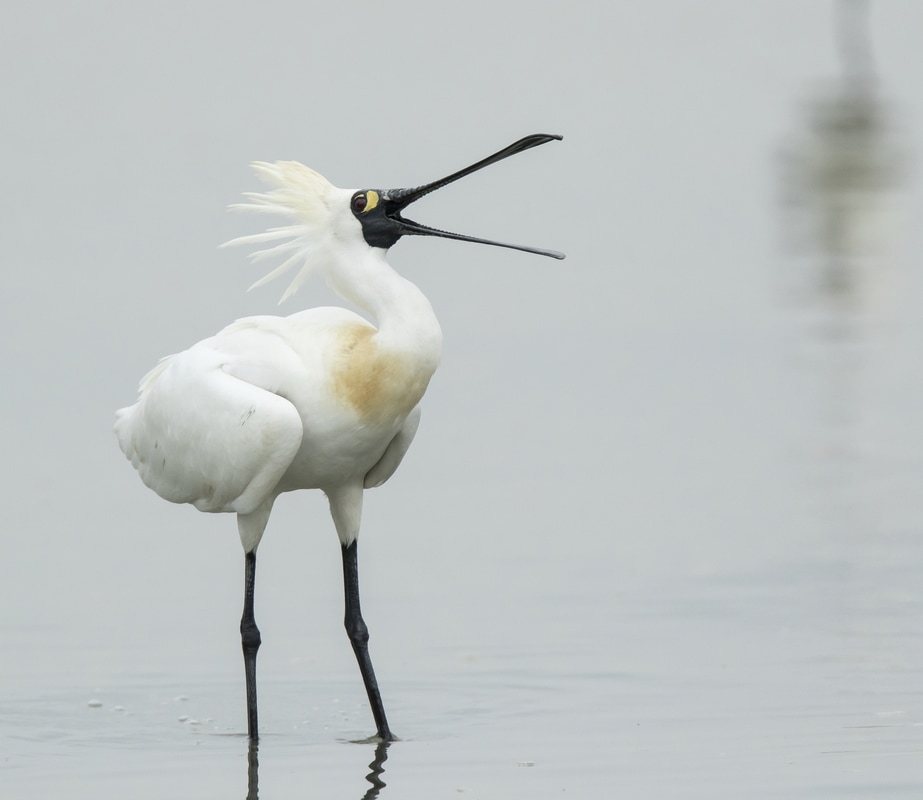
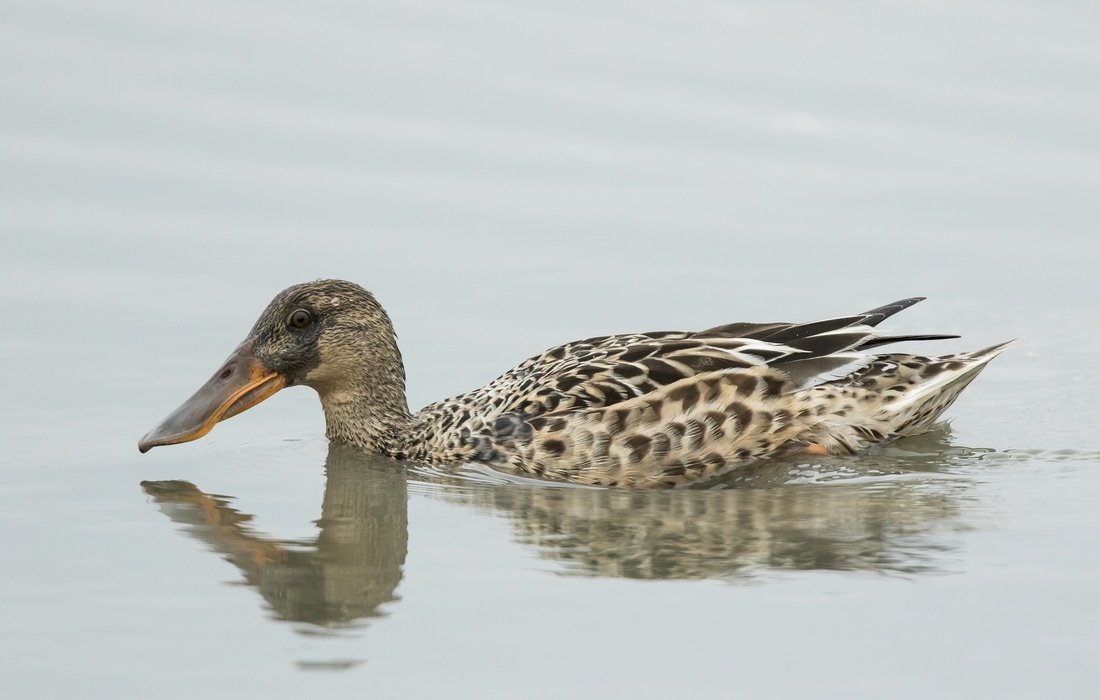
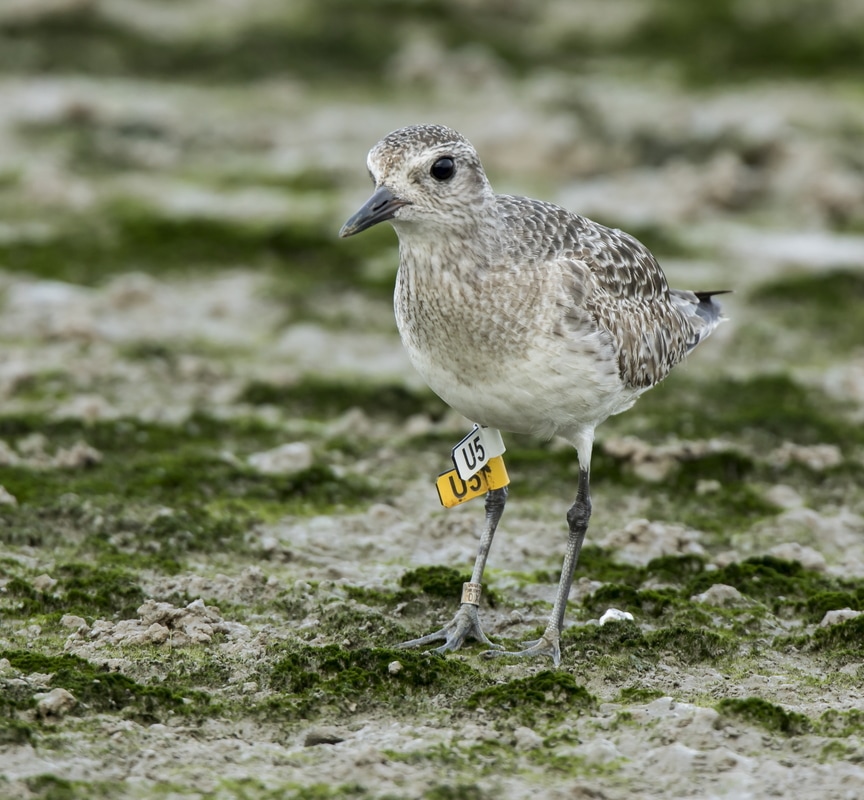
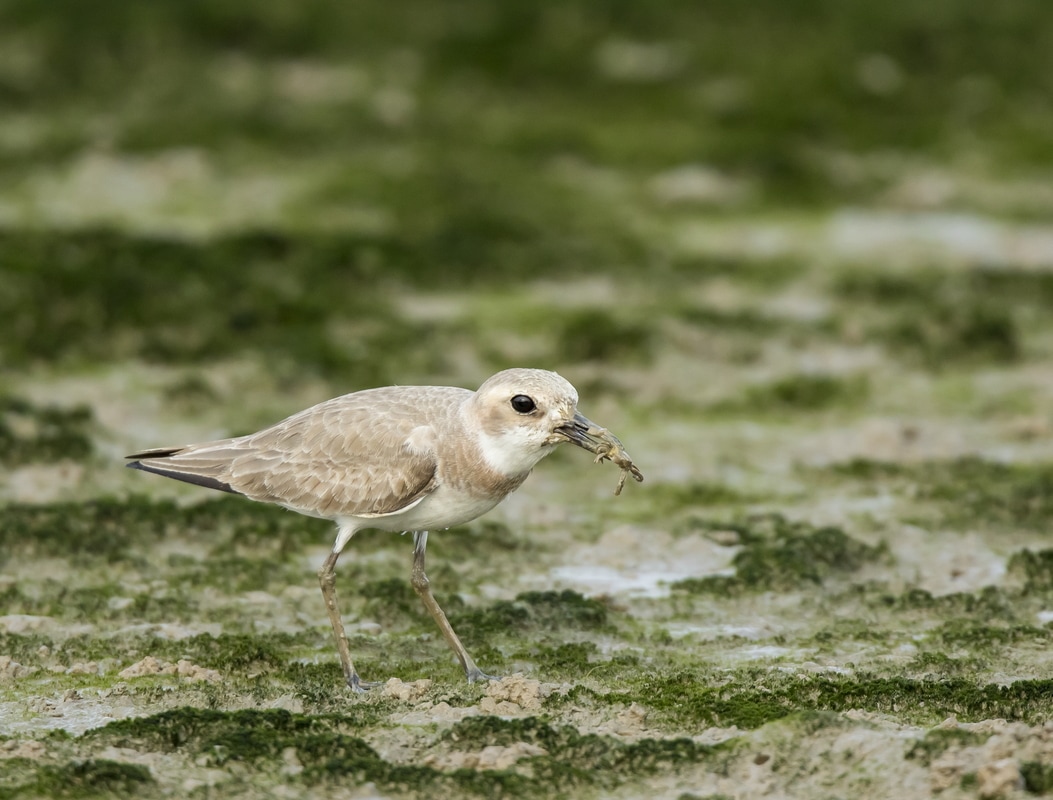
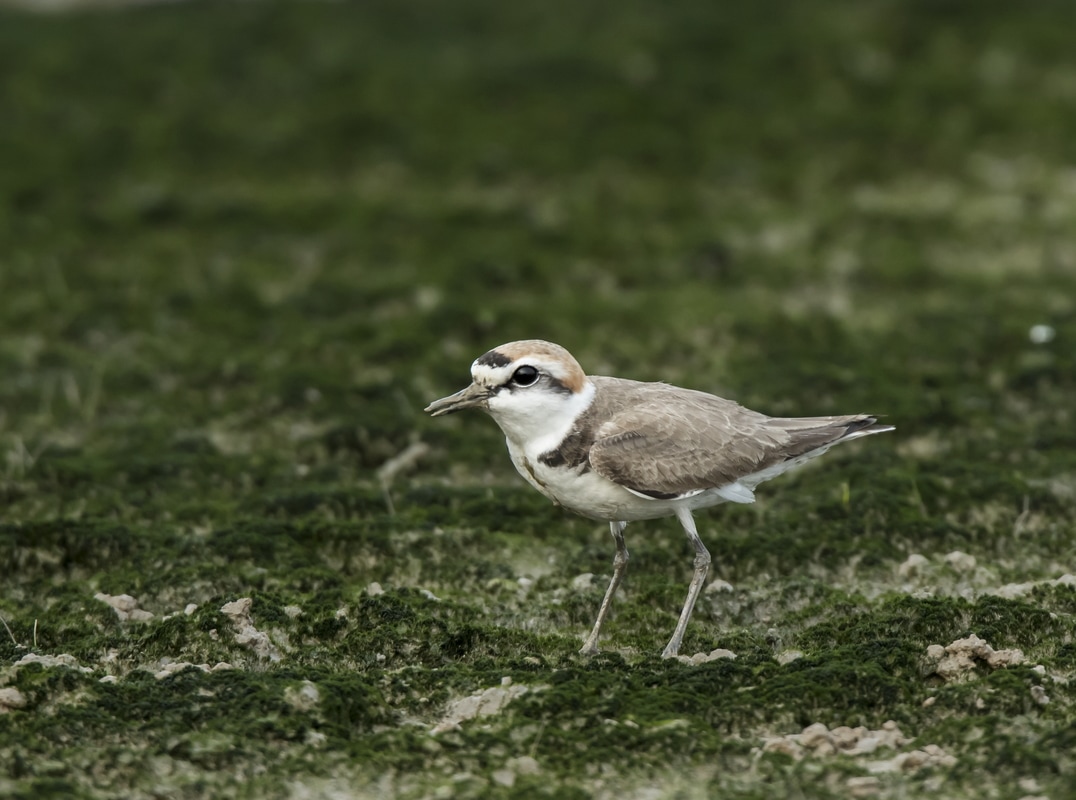
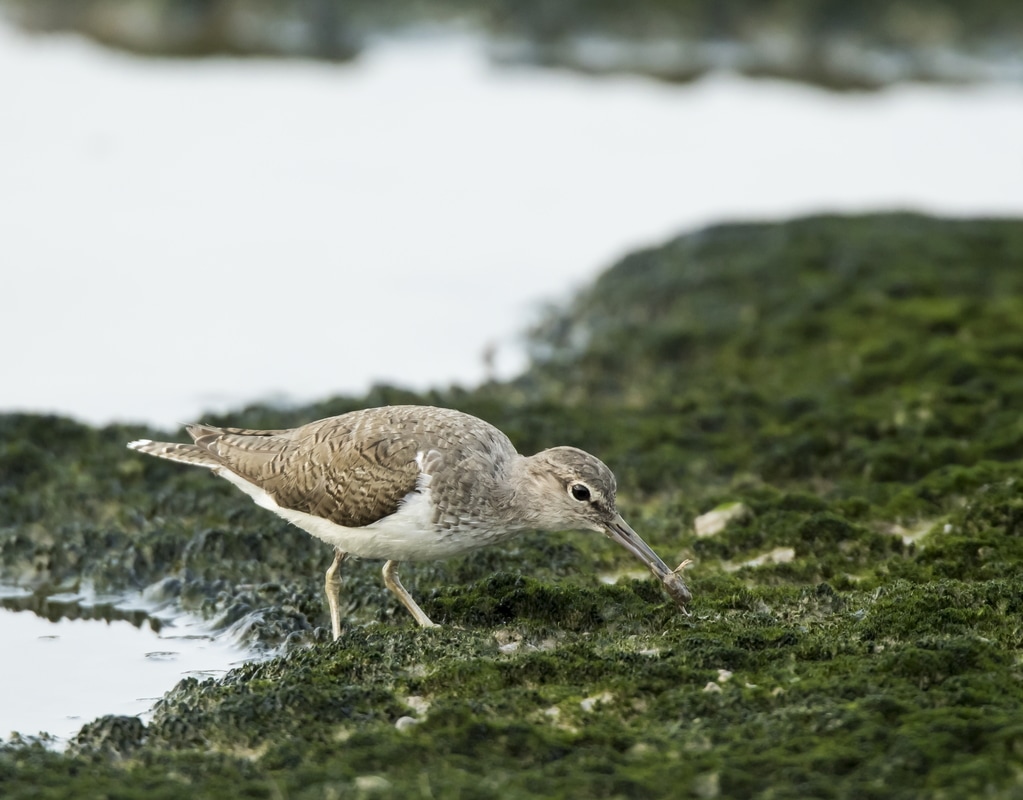
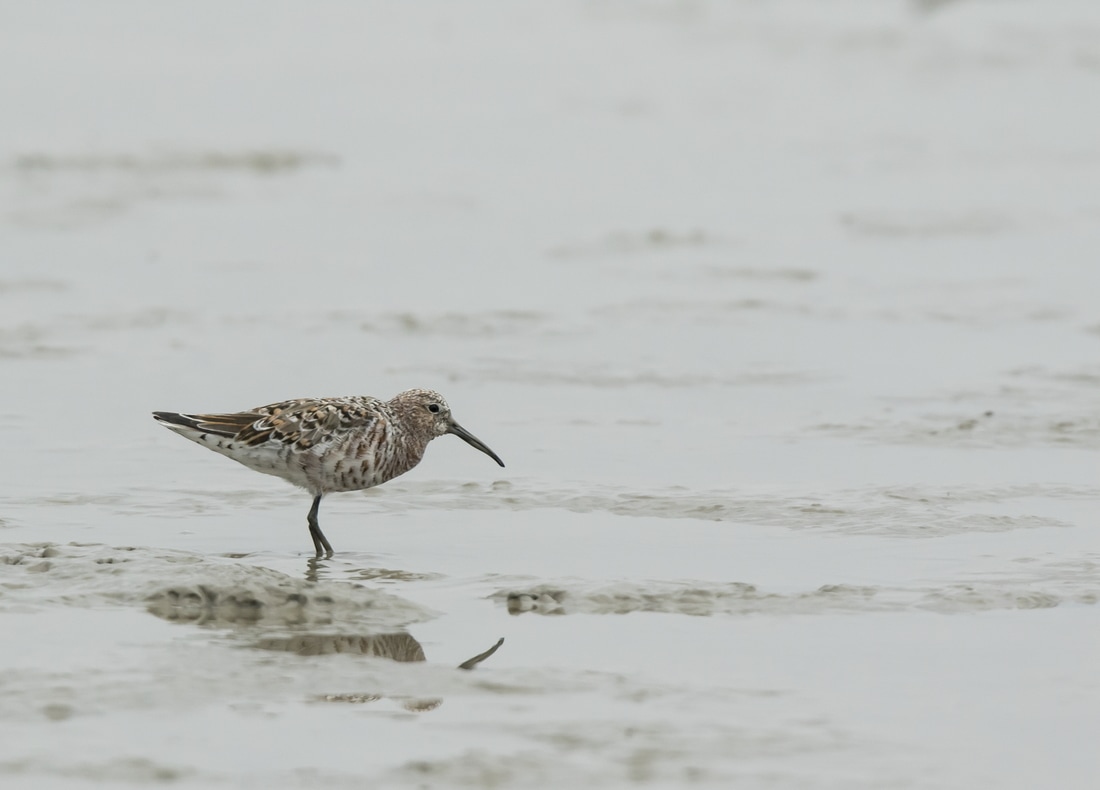
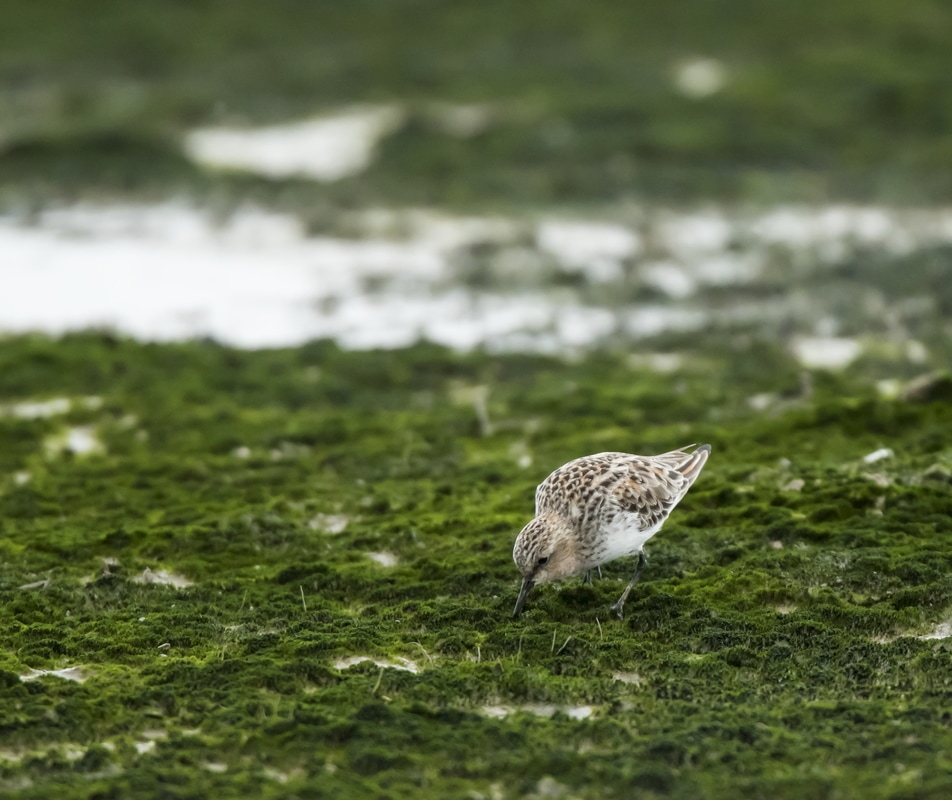
 RSS Feed
RSS Feed
